

IMPACT REPORT 2024
SV Oceania Visits Adele Island, Western Australia © Greenpeace / Oliver Clarke
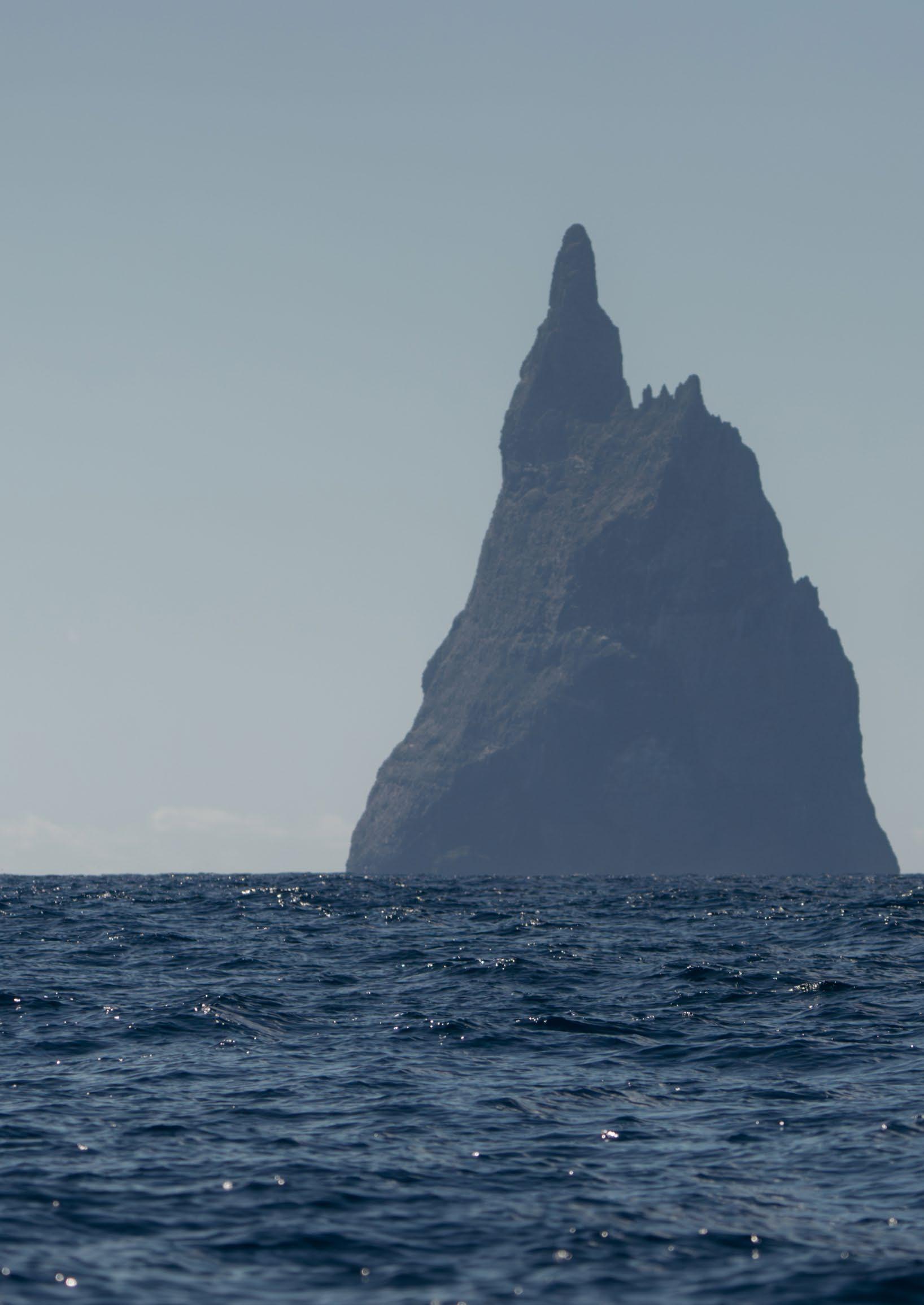
ACKNOWLEDGEMENT
Greenpeace’s mission is to secure an Earth capable of nurturing life in all of its magnificent diversity.
We acknowledge the nurturing of land and waters by Indigenous Peoples since time immemorial.
We acknowledge the enduring sovereignty of Indigenous Peoples of Australia and the Pacific.
We acknowledge we stand on the traditional lands of Indigenous Peoples and pay respect to elders past and present.
Ball’s Pyramid, Lord Howe Island © Greenpeace / Dillon Hayman

In memory of
Mr Emanuel Theodore Cassimatis 1935–2020
We honour and thank the late Mr. Cassimatis, a man whose unexpected generosity in leaving a lasting legacy continues to transform Greenpeace Australia Pacific’s work defending Earth’s climate and natural beauty.
Mr Tim O’Callaghan 1973–2024
A lifelong seafarer and Greenpeace volunteer who, in speaking up on the dangers of seismic blasting, helped us reach and educate thousands on the environmental realities and dangers of offshore gas drilling.
Ms Brenda McAvoy 1941–2024
A dedicated librarian and passionate supporter of Greenpeace Australia Pacific for over 30 years, Brenda gave regularly to help protect our planet. Through a generous gift in her will, her legacy will support hope and climate action for future generations.

SV Oceania Vessel Visits the Kimberley Region, Western Australia © Greenpeace / Oliver Clarke


Our Mission
To secure an Earth capable of nurturing life in all of its magnificent diversity.
Consistent with this mission, Greenpeace Australia Pacific’s objectives are to see Australia step up as a leader on climate and nature protection, and to supercharge Pacific power to drive global change, towards securing the necessary changes at emergency speed and scale for the flourishing of all life on Earth.
A Surge Wrasse (Thalassoma Purpureum) swimming at Ned’s Beach, Lord Howe Island. © Greenpeace / Bridget Ferguson

Theory of Change
If we use our unique capabilities in deep collaboration with allies to:
Clear the path of blockers and advocate for clean solutions in Australia .
Supercharge the ability of Pacific Island nations to intervene in international governance.
We will catalyse system changes that will:
Drive Australia’s shift to a wiser path, away from fossil fuels and ecological destruction at emergency speed and scale.
Secure nature protections and fair solutions to both the causes and consequences of climate change.

A Word from our CEO & Leadership
Think of someone you love. Visualise the wildest landscape you have ever seen. Imagine the call of the birds, the flash of fish in the ocean and your favourite tree reaching toward the sun.
All these images express the ‘why’ of Greenpeace.
And yet we live in jarring and confronting times, characterised by a multi-pronged assault, not only on the natural world, but the very foundations of truth, reason, society and what it means to be human.
Greenpeace faces this moment undaunted.
We were founded to secure the future of the earth, no matter the odds. Whatever the scale of the multiplying crises facing humanity and the earth, the bright light of our mission and arch of our purpose will remain, encapsulated in the symbol and spirit of the Rainbow Warrior.
It has never been more important to keep our heads, recall our values, and stay focused on our mission. Campaign strategy is how we make sense of the world, and respond to the threats to all we care about with maximum possible impact.
It is this combination of ambition and focus that has guided Greenpeace Australia Pacific—always working in deep collaboration
with friends and allies—to secure a set of massive, structurally significant campaign successes so far this decade. As Professor Johan Rockström said last year “[t]he only ‘currency’ that counts today is ‘speed and scale’, to return the world within the safe operating space of Planetary Boundaries”. All of our campaigns are driven by this ethic.
This impact report specifically covers the last twelve months, during which we have:
● Made decisive progress in the campaign to end deforestation from beef by shifting key corporate deforestation policies, directly saving tens of millions of wild animals, and abating millions of tonnes of CO2.
● Successfully held the line against Woodside’s mega-polluting Burrup Hub Expansion and the threats it poses to Scott Reef and other vital ocean ecosystems. The full Burrup Hub Expansion remains unapproved—and the campaign now involves almost half a million people.
● Partnered with Pacific Island Nations and communities to bring the world-historic climate justice case to the International Court of Justice. The advisory opinion is yet to be handed down, but could literally change the laws of the world.
● Launched a vastly ambitious new campaign for a world-first protected high-seas marine sanctuary in the Tasman Sea.
● Played our part in Greenpeace’s global campaigns to stop deep sea mining before it ever starts, and to secure an ambitious international plastics treaty.
Every one of these campaigns and all our other work were only made possible by the actions and beliefs of our supporters—those who volunteer time, take action, donate money and maintain the conviction that securing a flourishing Earth remains within our collective grasp.
And in July, the first Greenpeace ship to be permanently based in the Australia Pacific region, named the Oceania, set sail on its inaugural mission. In its first months of operation, Oceania saw campaign action on the west coast, facing Woodside, and then on the east coast at the coal port in Newcastle.
Humanity still has agency to determine our shared future. Whatever lies ahead, we will continue to look to the great horizons of our immeasurably complex and beautiful planet, and the endless possibilities of human beings working together, with our boundless capacity for love, creativity and cooperation.
Thank you to everyone who is part of Greenpeace for all that you give and do.
Onwards we go, because for so long as the world is in jeopardy, our shared work will continue with enduring energy and inextinguishable purpose.
Our future is together.
David Ritter Chief Executive Officer



Leadership Team Highlights for 2024:
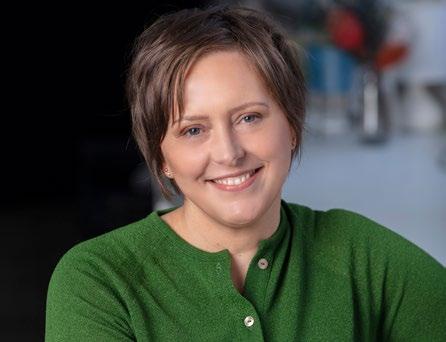
Brooke Dellavedova Interim Chief Operating Officer
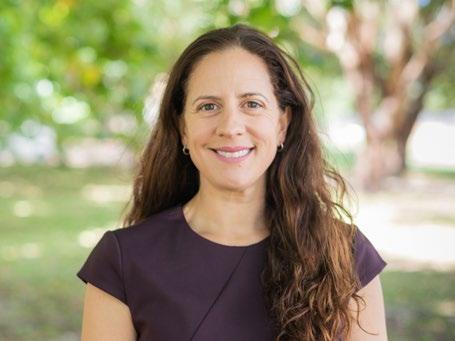

“…the images of our cheeky activist koalas bringing the 100% deforestation free message to the rooftop of McDonalds, one of Australia’s biggest buyers of beef, who later committed to going 100% deforestation free by 2030.”
“…hearing the empowering stories of Pasifika people first at the International Climate Conference (COP29) and then again at the International Court of Justice; which also reminded me of our power to reach and inspire millions.”
“...seeing our new donor-funded campaigning vessel, the Oceania, set sail to remote parts of north western Australia to bear witness to and protest against Woodside’s massive offshore fossil fuel expansion plans.”
Image Credits: Deforestation Action at Clifton Hill McDonald’s, Melbourne © Greenpeace, Peaceful Demonstration during ICJAO Hearings © Emiel Hornman / Greenpeace, SV Oceania in Australia © Greenpeace.
Kate Smolski Program Director
Luke Edwards Fundraising & Technology Director
Our Strategic Capabilities

Creative confrontations to ensure our demands cannot be ignored.

Inspiring engagement to motivate and mobilise a critical mass of people and volunteers.

Smart political advocacy to hold politicians accountable and work with them on solutions.

A global network enabling greater reach and impact.
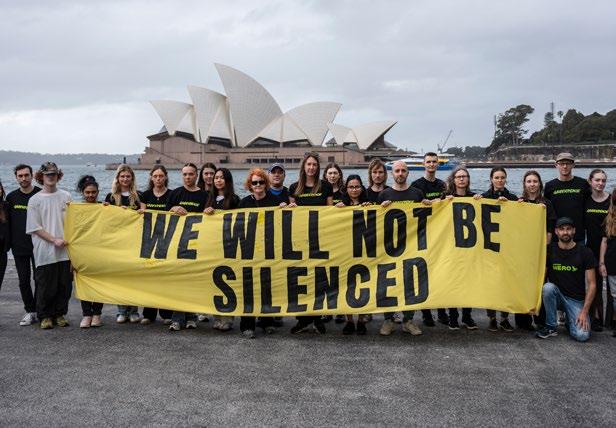
Legal capacity to ensure our integrity, protect against antidemocratic attacks on our work, and to add legal scrutiny to our campaign toolkit.

Corporate campaigning to counter the power of major polluters, hold business accountable, and work with champions to drive change.

Powerful storytelling to shift mindsets and offer a compelling vision of hope.
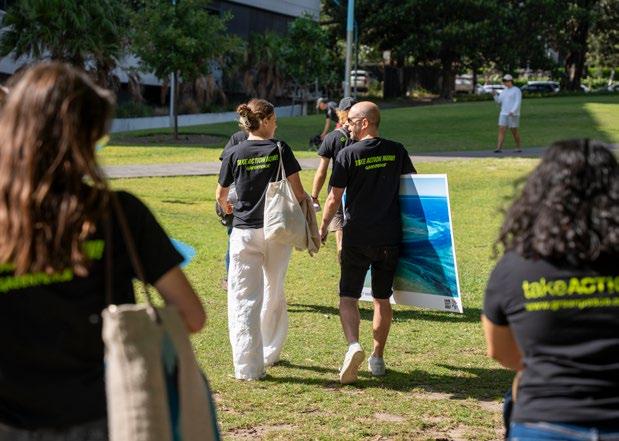
Independent fundraising to maintain the strength of our democratic legitimacy.

Key influencers to harness cultural power and amplify our engagement of over a million supporters.
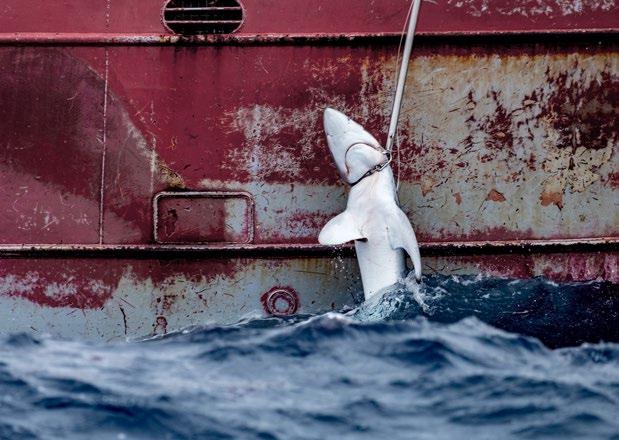
Cut through investigations to shine the light on environmental wrongdoings.
© Marie Jacquemin / Greenpeace
© Greenpeace / Toby Davidson
© Greenpeace / Bridget Ferguson
© Greenpeace
© Greenpeace
© Greenpeace / Toby Davidson
© Greenpeace / Toby Davidson
© Greenpeace / Oliver Clarke
© Emiel Hornman / Greenpeace
© Greenpeace / Toby Davidson
A Word from our Board
As the needs of the moment grow ever greater and graver, so does Greenpeace Australia Pacific continue to grow its intent and capabilities.
2024 was significant in so many ways for our mission.
We launched an incredibly ambitious threeyear plan that expanded the scope of our campaigns across both climate and the environment, and enlarged our loci of activity to better reflect our region and connect with our global agenda.
Understanding the interdependence of our campaigning to fundraising and vice versa, we have invested heavily in both. This has seen us draw significantly on reserves in the early stages of the three-year plan whilst working to exponentially lift our income, towards ultimately lifting the organisation to do more and be more.
This is the time.

That is the view the Board took in championing this ambitious plan. We have the leadership, the staff, the theory of change, the culture, and the organisational capability. We know how to campaign in the best ways that only Greenpeace can and does. And just one year in, we have already seen some amazing results.
We also know that as a Board, we too have a responsibility to deliver on our end of the plan. Good stable governance is a given. But so too is the need, together with the leadership, to be constantly challenging each other, to meet this moment.
In 2024 the Board rated incredibly well in an external review. We managed the transition smoothly (though sadly) from a very longserving COO/Company Secretary to a very capable interim COO. We oversaw the completion of a multi-year project delivering a comprehensive risk reporting framework, great progress improving our cyber security capability, and implementation of a sophisticated risk reserves strategy. But we know more is needed. As the impacts of delays and obstructions to climate and environmental action hit home—as seen this past summer—so too grows the need for Greenpeace to act. Year two of our threeyear plan demands much of us all.
I am about to pass on the role of Chair as my nine-year term comes to a close. I do so with great confidence. My successor, Nicolette Rubinsztein AM, is a highly experienced Director and passionate Greenpeace advocate, and the current Board also continues to feature Directors of great talent, collaborative intent and energy.
Louise Tarrant Board Chair
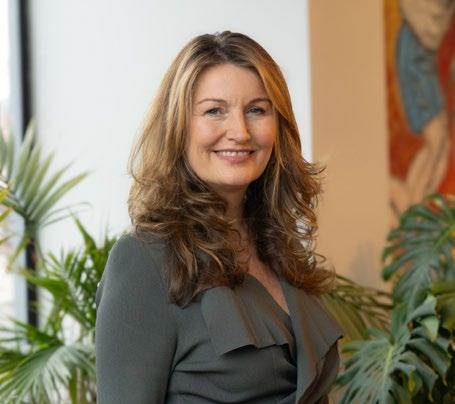
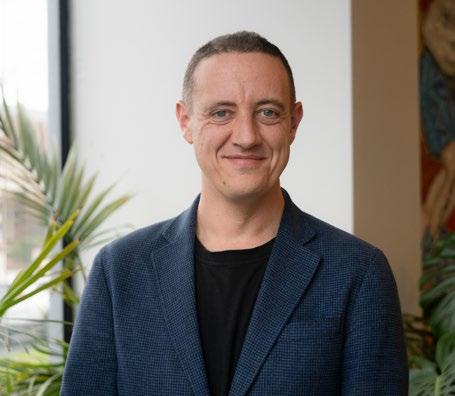


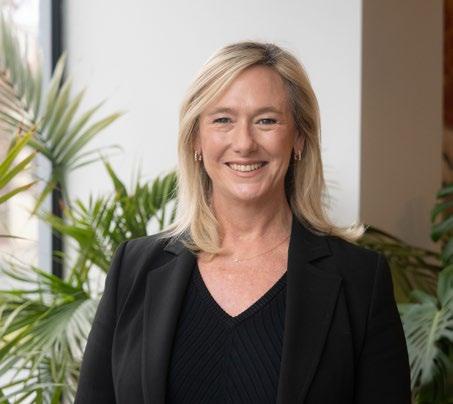


In reflecting on my time as Board Chair, I have witnessed tremendous growth in the organisation’s organisational confidence, capability and impact. Much of that growth can be attributed to the exceptional staff that Greenpeace Australia Pacific attracts.
In particular, I’d like to acknowledge the outstanding leadership of CEO David Ritter and the amazing leadership team of Kate Smolski, Luke Edwards, and the recently departed Terry O’Donnell. Together, their unity of purpose and ambition has given Greenpeace Australia Pacific the confidence to well and truly be its best self.
Finally and most importantly, I want to acknowledge the many Greenpeace supporters that, through a million acts of courage, support and generosity, provide the succor that enlivens, strengthens and excites the possibilities that Greenpeace’s vision and work rises to. And as always, in reflecting on the year that’s been, we can’t help but look forward to what is to come. I feel Greenpeace Australia Pacific is ready.
Best wishes,
Louise Tarrant Board Chair
Suzie Shaw Director Anthony Coleman Director
Nicolette Rubinsztein AM Chair of the Finance & Audit Committee
Luke Giuliani Director
Hannah Browne Director
Professor Michael Dodson AM Director
Loughlin Magowan Director (Term ended May 2024) Image Credits: © Michaela Skovranova / Greenpeace

SV Oceania Vessel Visits the Kimberley Region, Western Australia
© Greenpeace / Oliver Clarke

2024 Impact in a Snapshot
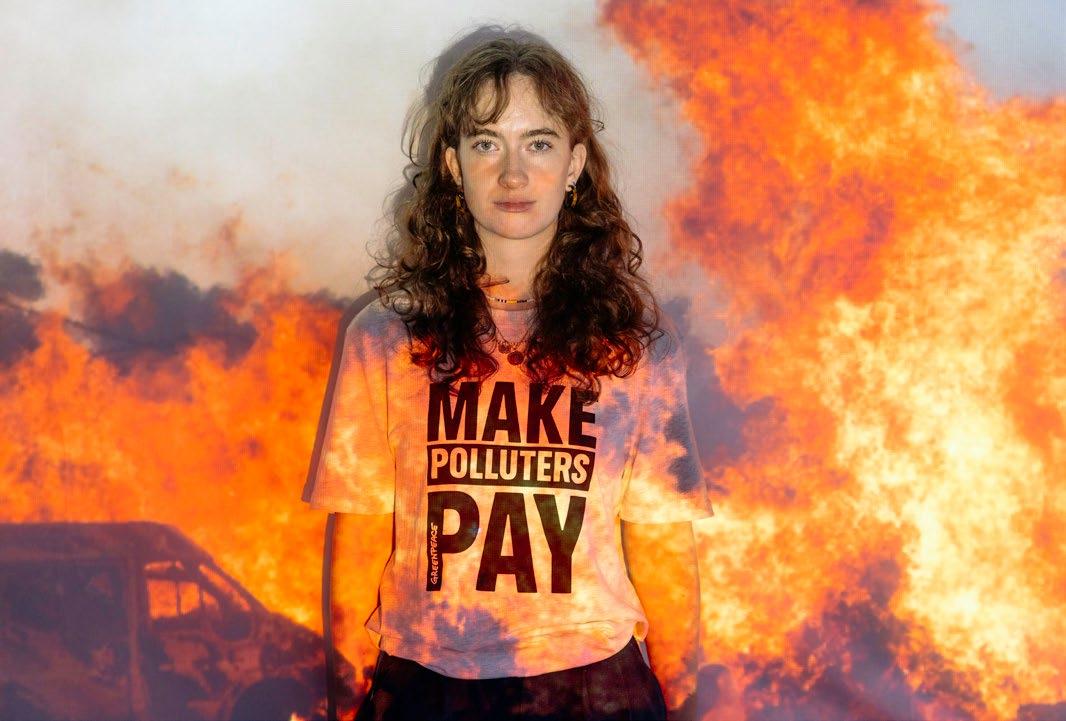

International Court of Justice
The world’s highest court hears the case for government obligations to protect human rights from climate change p.42
The Hague, Netherlands
Conference of Parties (COPs)
Australia commits $50m to the loss & damage fund at COP29 p.46
Baku, Azerbaijan
Deep Sea Mining
Pacific lobbying ousts the ISA’s Secretary General over alleged vested interests p.37
Kingston, Jamaica

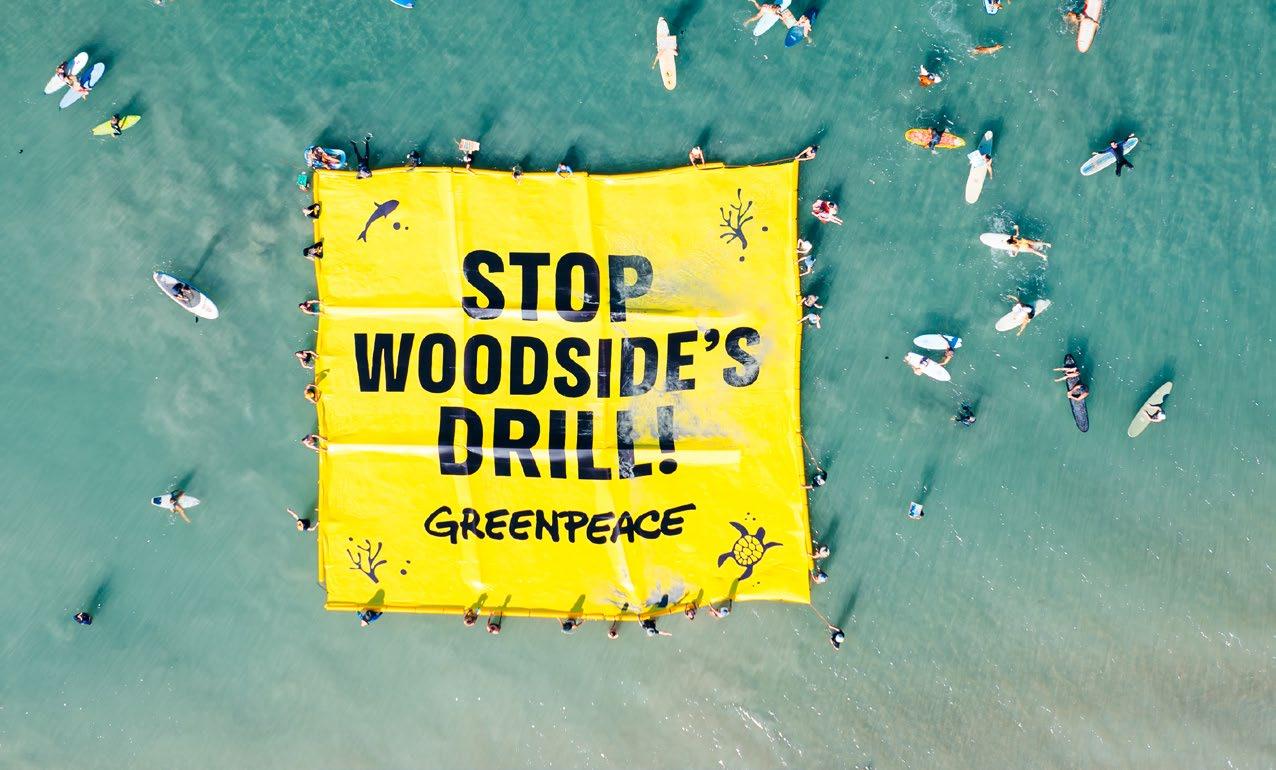
Woodside Energy
WA’s EPA advised Woodside that Browse is too dangerous to proceed p.22
Shareholders reject Woodside energy’s climate plan p.21
Perth, Australia
© Emiel Hornman / Greenpeace
© Marie Jacquemin / Greenpeace
© Greenpeace
© Greenpeace
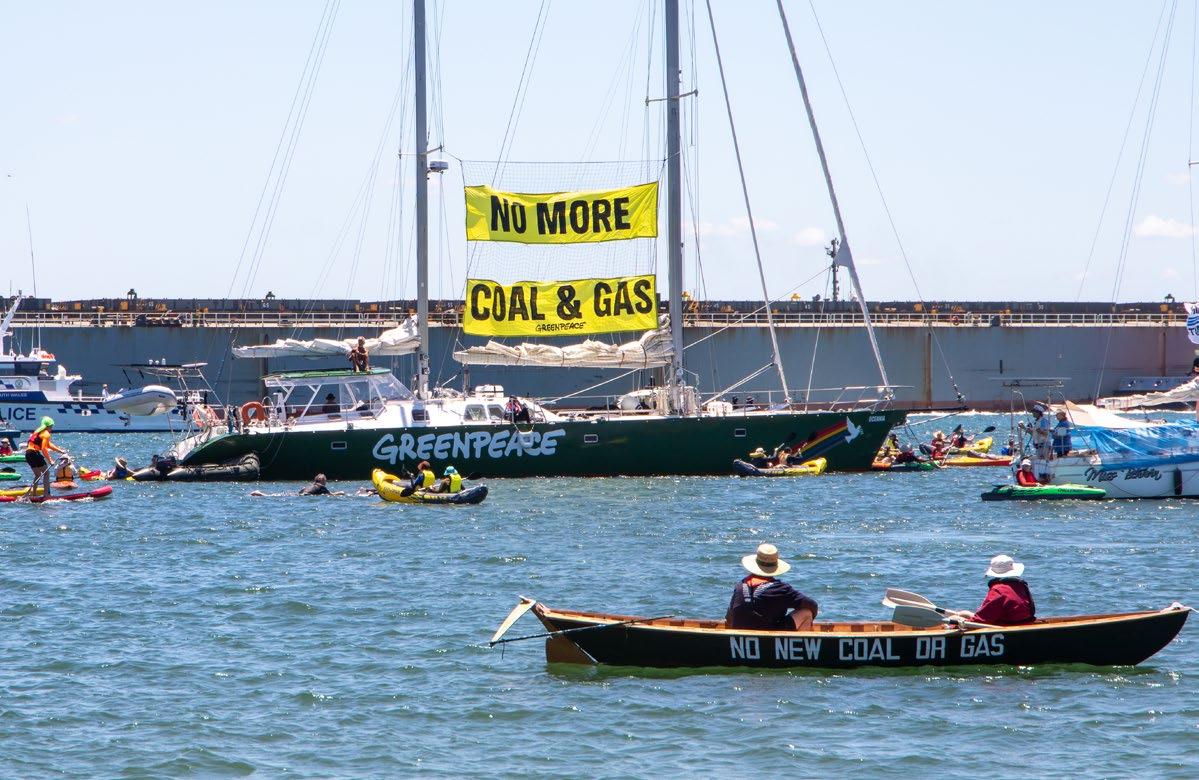
Deforestation
Worlds Largest Coal Port
Oceania participates in largest coal export port protest p.50
Newcastle, Australia
Australia’s biggest beef buyers commit to going deforestation free p.31
Sydney, Australia
Global Ocean Treaty
Australia announces its intent to ratify the Global Ocean Treaty p.35
Canberra, Australia

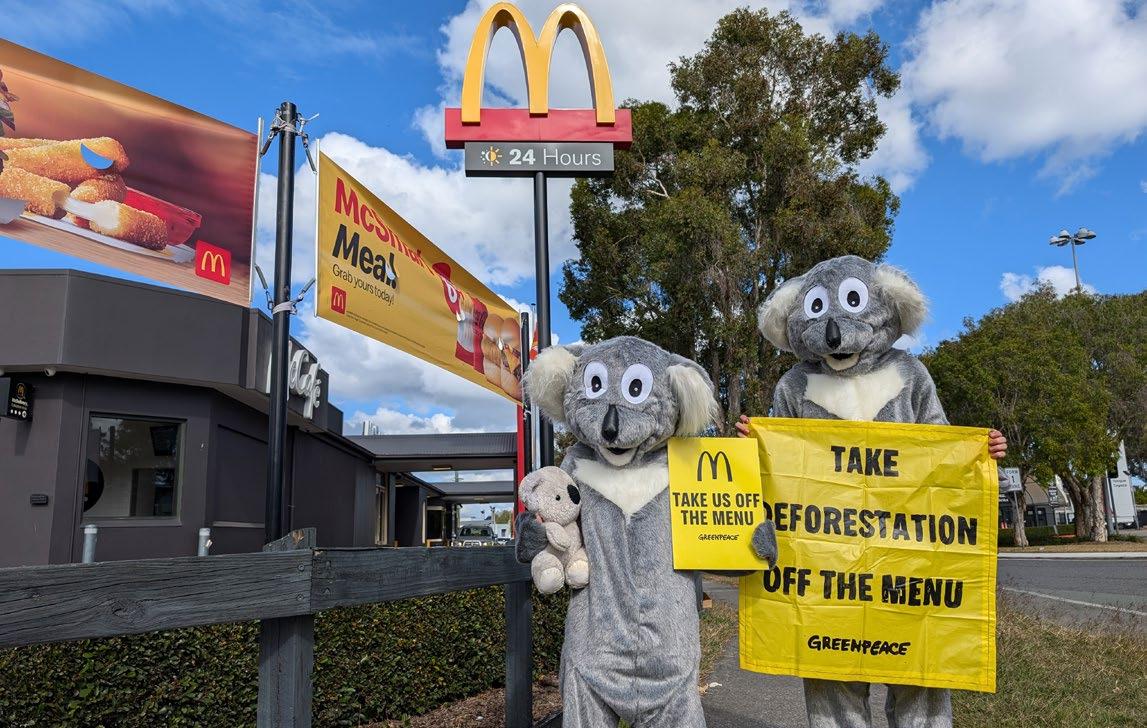
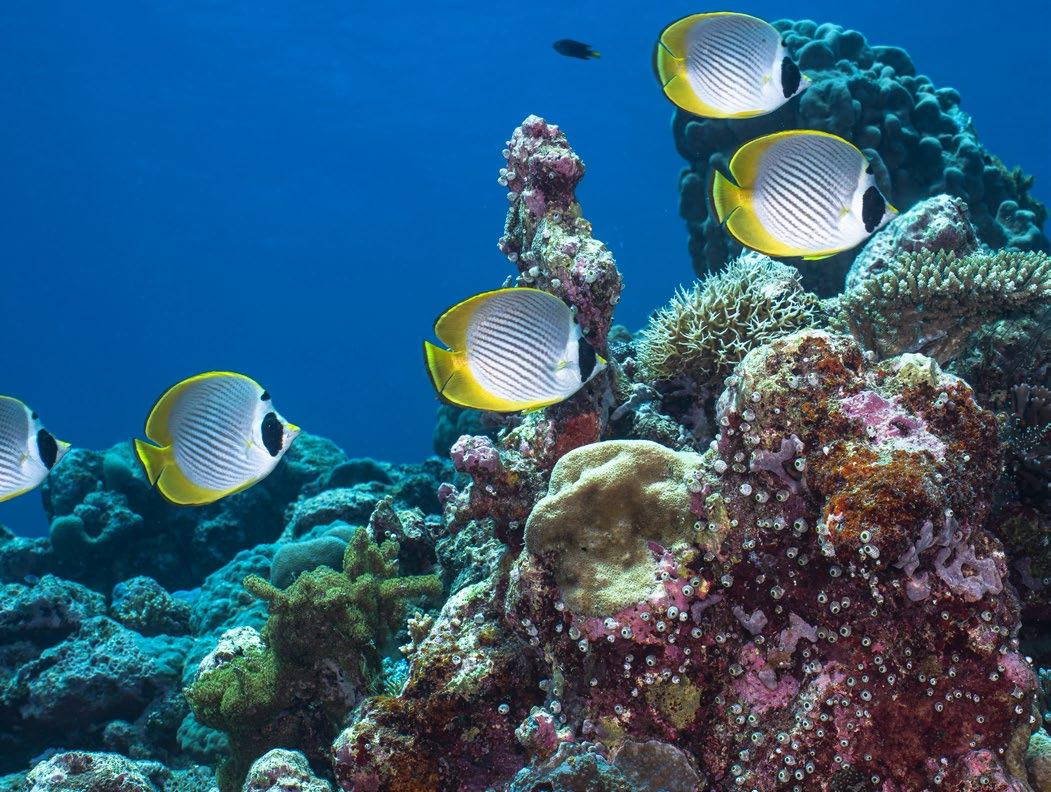
Scott Reef
Nearly half a million Australians petition Plibersek to save Scott Reef p.21

Fuel Efficiency
Canberra, Australia
Australia legislates fuel efficiency standards p.24
Canberra, Australia
© Greenpeace
© Greenpeace / Bridget Ferguson
© Greenpeace
© Wendy Mitchell / Greenpeace
© Greenpeace / Isabella Moore
CLIMATE & ENERGY
Fossil fuel driven climate change is the greatest threat to the magnificent diversity of life, both in the Australia-Pacific region and across our planet.


Joe Rafalowicz Head of Climate and Energy
“Greenpeace Australia Pacific’s Climate & Energy campaign is committed to driving Australia’s pivot away from gas in favour of renewable energy solutions, at emergency speed and scale. Our ambition is for Australia to become a green energy exporting superpower, instead of one of the worst fossil fuel exporters in the world."
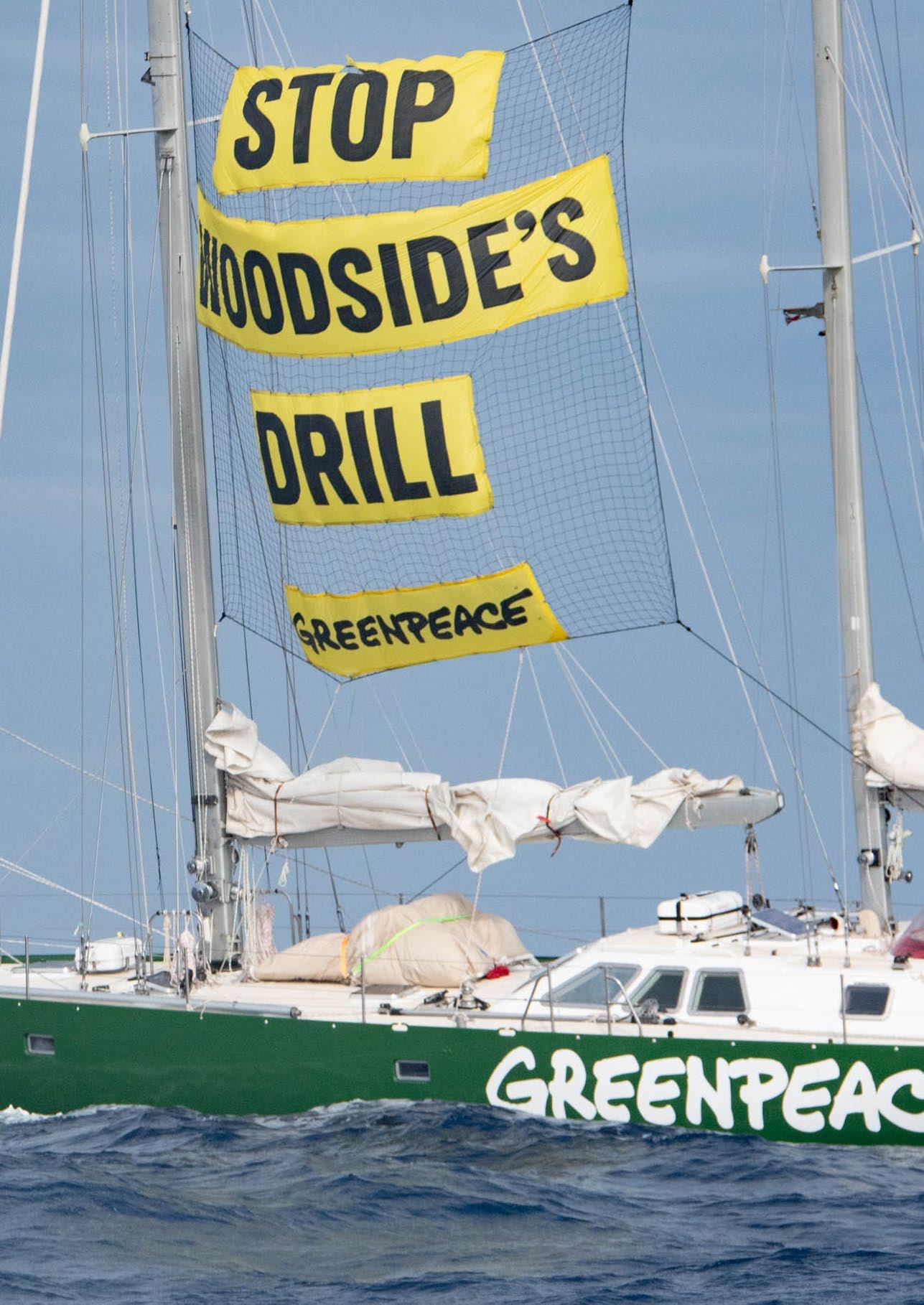
Protest of Woodside and Drill Rig Valaris at Scarborough Gas Field in Western Australia
© Greenpeace / Jimmy Emms
Phasing out Gas in Australia
Fossil fuel giant Woodside Energy’s Burrup Hub project is the largest, most climate polluting new gas project currently proposed in Australia.

BROWSE
NORTH WEST SHELF GAS PLANT
Key locations in the Burrup Hub gas project proposed by Woodside. This is the largest and most polluting new gas project currently proposed in Australia.
6.1 million tonnes of greenhouse gases are expected to be emitted across Burrup Hub’s lifetime—over 12 times Australia’s current annual emissions.
SCARBOROUGH
Woodside has begun drilling 30 wells for the Scarborough gas field off the coast of Exmouth, WA. Its completion will put the UNESCO protected Ningaloo reef at risk of an oil spill.
BROWSE
Woodside also wants to drill 50 wells around and underneath the globally significant Scott Reef, home to hundreds of species and critical habitat for endangered pygmy blue whales and vulnerable greenback turtles.
NORTH WEST SHELF
On land, Woodside wants to extend the life of its North West Shelf gas processing plant by an additional 50 years.
Up to 33 threatened species at risk
Including the blue pygmy whale and green sea turtle.
Decades of reliance on dirty energy
Continued new gas expansion projects such as this will delay Australia’s transition to renewable energy and prolong the era of fossil fuels across the region.
STOPPING BURRUP HUB WILL HELP END THE ERA OF GAS.
The scale and strategic significance of Woodside’s Burrup Hub makes it key to the long-term horizons of new gas extraction projects in Australia. Expanding gas extraction has no part in a sustainable future for Australia.
Greenpeace’s multi-year campaign continues to hold stakeholders accountable and establish the case for the Federal Environment Minister to deny the proposed Browse and North West Shelf projects on environmental grounds. Some key campaign highlights across the past 12 months have included:
HOLDING WOODSIDE ACCOUNTABLE
In early 2024, questions asked at Senate Estimates exposed Woodside’s failure to formally submit required environmental plans for several of its facilities, which were still operating in a clear breach of environmental laws. Our media work spotlighted why Woodside cannot be trusted with our environment, with the offshore regulator NOPSEMA subsequently issuing a formal order for Woodside to comply with its legal requirements.
NEARLY HALF A MILLION VOICES CALLING FOR SCOTT REEF TO BE SAVED
In August, we delivered a giant, 40 metre scroll bearing 440,000 signatures calling for Minister Plibersek to save the Scott Reef directly to Parliament House. This petition is believed to be the fifth largest in Australian parliamentary history, and the biggest in relation to any environmental matter. Contained in a giant glass bottle, this message of clear community concern
about the catastrophic risks of a fully realised Burrup Hub project was publicly accepted by Minister Plibersek, and later referenced in debate by a number of concerned parliamentarians.
SHAREHOLDERS REJECTED WOODSIDE’S CLIMATE PLAN
Greenpeace collaborated closely with other environment and community organisations at Woodside's AGM in a clear show of opposition to the Burrup Hub project.
Inside the AGM, a world record 58% of investors voted down Woodside’s climate plan in a clear statement that it wasn’t going far enough to tackle climate change.
This development came as a significant blow to the company’s credibility on climate with reporters from the Australian Financial Review describing this sinking of Woodside’s climate plan as “sending the gas giant’s board to a period of strategic reflection”.
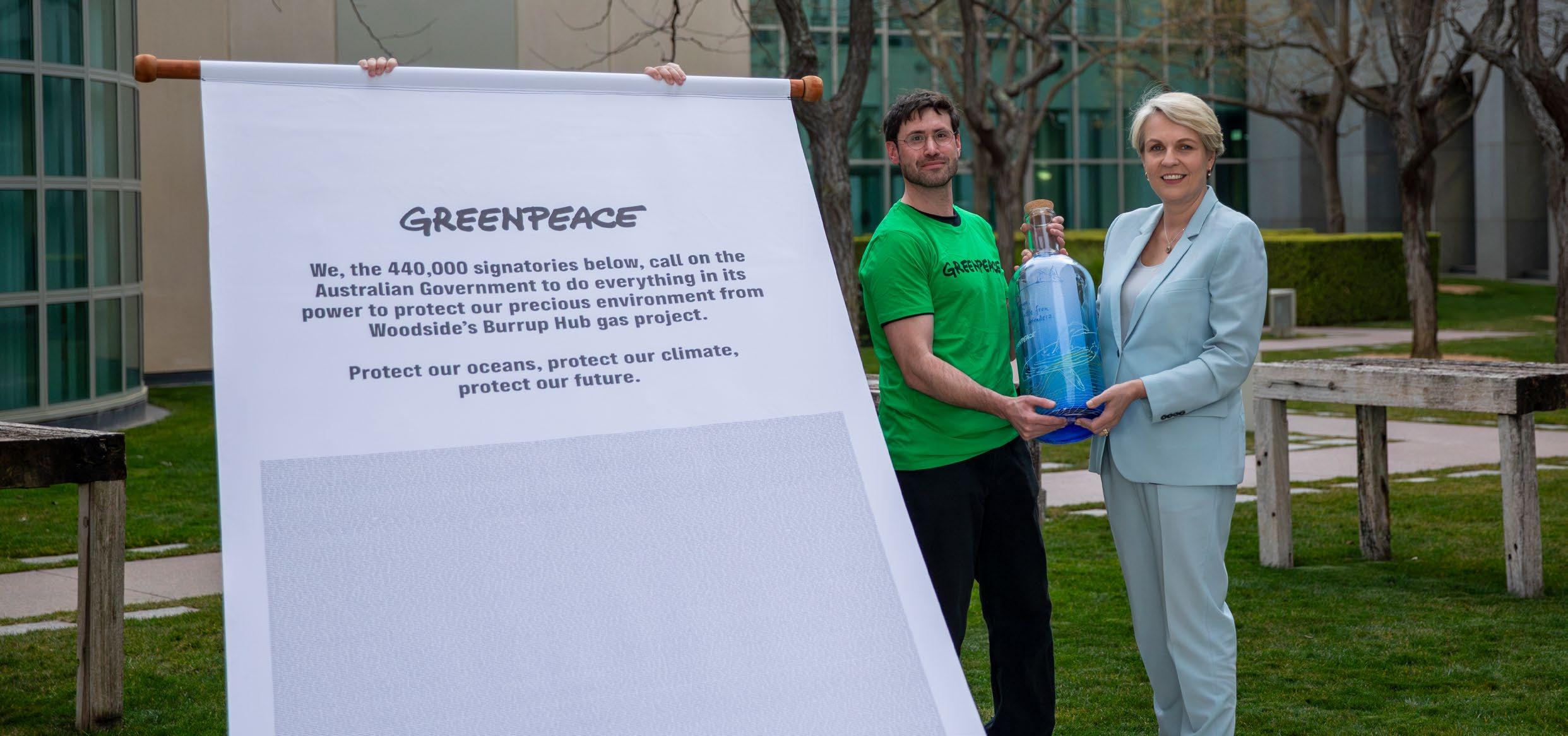
© Greenpeace / Toby Davidson
SCRUTINISING THE APPEALS PROCESS
In May, Simon McKirdy, biosecurity expert and ex-employee of major Burrup Hub partner and oil giant Chevron, was appointed as co-chair of the committee tasked to consider hundreds of appeals against the project. On the heels of Greenpeace raising concerns about the appropriateness of this appointment, alongside the Australian Conservation Foundation, WA Environment Minister Reece Whitby announced that Professor McKirdy’s appointment to the committee had been revoked.
BUILDING THE ENVIRONMENTAL CASE AGAINST BROWSE
We commissioned expert advice outlining the serious risks posed by Browse to vulnerable and endangered turtles to inform the WA Environmental Protection Authority’s (EPA) assessment of Browse and other relevant processes. Our ongoing documentation and advocacy have also reinforced the specific ecological risks posed by Browse to rare and threatened species, such as the dusky sea snake.
Media reports in August 2024 provided major campaign vindication, revealing that WA’s Environmental Protection Agency had taken the rare step of warning Woodside of its preliminary view that the environmental risks associated with the Browse project were ‘unacceptable’’.
CONFRONTING WOODSIDE AT SEA AND RALLYING THE COMMUNITY TO THE CAUSE
On its inaugural mission, the Oceania (p. 50) documented Woodside’s rig preparing to drill into the ocean floor, further highlighting that Woodside cannot be trusted with our magnificent oceans. Hundreds of local people participated in a flotilla and beachside protest against Woodside’s plans in Exmouth, complemented by weeks of community engagement events to coincide with Oceania’s mission.

Protest of Woodside and Drill Rig Valaris © Greenpeace / Oliver Clarke

SPOTLIGHTING WOODSIDE’S RECORD OF NEGLECT
Our October release of ‘Risky Business’ —a report cataloguing Woodside’s documented history of environmental neglect including oil spills, a collision with a whale calf, and poor infrastructure management—further strengthened the case for the Federal government to halt the project on the basis that Woodside cannot be trusted with safeguarding our environment.
Throughout 2024, we also built critical political support across Parliament by sending a photo book showcasing the ecological beauty of Scott Reef that is at risk to every one of Western Australia’s 84 Members of Parliament (state and federal) along with Cabinet Ministers, Independents and key MPs who support nature and climate action.
Watch this space
With this campaign now entering its final phase ahead of the federal decision on whether Browse and the North West Shelf projects can proceed, we will be seeing through this fight to the end. Meanwhile, Greenpeace’s claim that Woodside has made misleading or deceptive representations about its plans to reduce its greenhouse gas emissions in response to climate change, continues to progress through the Federal Court.
Woodside Energy’s North West Shelf gas project on the Burrup Peninsula © Greenpeace
CLIMATE & ENERGY
Accelerating Clean Solutions
Greenpeace Australia Pacific has made a significant contribution to the acceleration of Australia’s transition to clean transport. Our campaigning to encourage Western Australia’s rapid transition to becoming a renewables superpower continues.
Electrify
Road Transport is Australia’s fastest growing source of emissions, and third fastest overall, but the intransigence of vested interests had held back the legislating of national fuel efficiency standards—the key to driving change on our roads.
OUR CONTRIBUTION TO DELIVERING THE CAMPAIGN RESULT
The failure of earlier federal attempts to introduce national fuel efficiency rules had led Australia to being marooned alongside Russia as the only other Organisation for Economic Co-operation and Development (OECD) country to lack such a framework. When the Albanese government was elected, and Minister Chris Bowen committed to bringing in the much needed laws, Greenpeace identified our role as providing positive support for the measure at scale, and exposing the vested interests that were holding back progress.
THE GOVERNMENT INTRODUCES A STRONG FUEL EFFICIENCY STANDARD
The Government’s release of a Regulatory Impact Statement outlining the shape of a New Vehicle Efficiency Standard (NVES) in February 2024, ambitious enough to drive meaningful emissions reduction, which was consistent with our campaign ambitions and those of others working on the reform.
CONFRONTING THE VESTED INTEREST BACKLASH
As expected, the new measures proposed by Minister Bowen were then challenged by elements from within the motor vehicle lobby, including the peak Federal Chamber of Automotive Industries (FCAI), seeking to preserve the status quo of no national fuel efficiency standards for commercial advantage. We responded, directly and publicly engaging with the corporate brands in question (including Toyota and Mazda) achieving more than ten million impressions across various digital media platforms. We also provided clear documentation outlining the extent of the history of vested interest interference in preventing the implementation of good policy on the issue. Other brands, including Hyundai and Volvo were subsequently moved to publicly distance themselves from the FCAI.
A STRONG POLICY REACHED THE SENATE FOR DEBATE
With the car lobby now lacking a unified voice, the final step was to ensure the integrity of the government’s proposed measures through the parliamentary process. More than 1,600 Greenpeace supporters made submissions in the final consultation process in a clear demonstration of public support for the proposed policy’s ambition. We also commissioned an expert to undertake modelling which, in demonstrating the policy’s real emission impacts, helped inform policy negotiations in the Senate.

Australia is now on the road to cleaner transport
In May 2024, the Australian Government legislated a fuel efficiency standard that will accelerate the availability, accessibility, and affordability of electric vehicles across Australia. Modelling also shows that this will prevent an estimated 80 million tonnes of transport emissions by 2035.
© Greenpeace / Isabella Moore
CLIMATE & ENERGY
Western Australia’s Renewables Potential
Greenpeace in Australia was founded in WA—with our first activities taking place off the coast of Albany, to stop whaling, in 1977. Our active return to campaigning in Western Australia this decade is because of the crucial role that the state can play in catalysing the clean energy transformation of Australia and our region—both by stopping new gas expansion, and driving renewable alternatives. Greenpeace’s work on the solutions side compliments our campaigning to stop new offshore gas, and has involved extensive evidence-based collaborative advocacy.
ADVOCATING FOR THE ALTERNATIVES
Western Australia has a terrific opportunity to establish an export-scale green iron industry and we have been advocating to government to create the preconditions for rapid scale growth in this sector.
The centre-piece of this advocacy was the development of a report entitled 'Forging our Future', in collaboration with a number of partners, including the WA branch of the Australian Manufacturing Workers Union, the Conservation Council WA and the Australian Steel Institute.
‘Forging our Future’ concluded that an export-scale green iron industry in WA would:
● Safeguard Australia’s iron export industry.
● Create tens of thousands of secure jobs.
● Significantly reduce global emissions.
The report also identified the ten key requirements that would need to be satisfied to enable rapid take off.
The Federal Government has since committed $3b to green metals development for aluminium and iron production in Australia pursuant to its Future Made in Australia economic plan.

© Greenpeace / Jonas Scheu

COLLABORATING TO DRIVE CHANGE IN WA
The fossil fuel lobby is especially strong in WA—including Woodside, Chevron and conglomerate Seven Group Holdings group, the latter of which owns both the state’s only daily newspaper The West Australian—and significant oil & gas shareholdings. This makes collaboration on an alternative direction for the state even more important, to give an effective voice to the clear majority of the West Australians who do want more action on climate, and greater protection of nature.
Our co-founding of a new civil society roundtable on climate action in WA brought together a diverse mix of key civil society groups including the Conservation Council of WA, the WA Council of Social Services, Unions WA, the Australian Manufacturing Workers’ Union, the Electrical Trades Union, and the Maritime Union of Australia. Working together and in further outreach with others, this new collaboration engaged with relevant federal and state energy ministers on WA’s energy transition needs. Key shared policy suggestions developed and put forward to the WA government included the introduction of a green industry package, decommissioning hubs, and a state-based renewable energy target.
Watch this space
The election commitments of the incoming WA Labor Government include a number of significant requested measures developed and presented by the civil society roundtable, including the appointment of a Decarbonisation and Manufacturing Ministry, the creation of a household battery scheme, workforce transition training, and measures to encourage the development of a local decommissioning industry.
Woodside Offshore Gas Facility at North Rankin Complex in Western Australia © Greenpeace
NATURE
From the magnificent oceans that surround our continent, to the wild places of the Australian hinterland, our region is home to a staggering array of life.


Glenn Walker Head of Nature
"Our campaigns have focused on protecting Australian forests and the oceans of our region from specific major threats–and to create the conditions for their recovery and regeneration."
Ball’s Pyramid, Lord Howe Island © Woody Spark / Paul Hilton

PROTECT FORESTS
Our campaign objective is to put a stop to the single largest driver of forest destruction in Australia—deforestation for cattle production—by persuading the nation’s largest purchasers of beef products to clean up their supply chains.
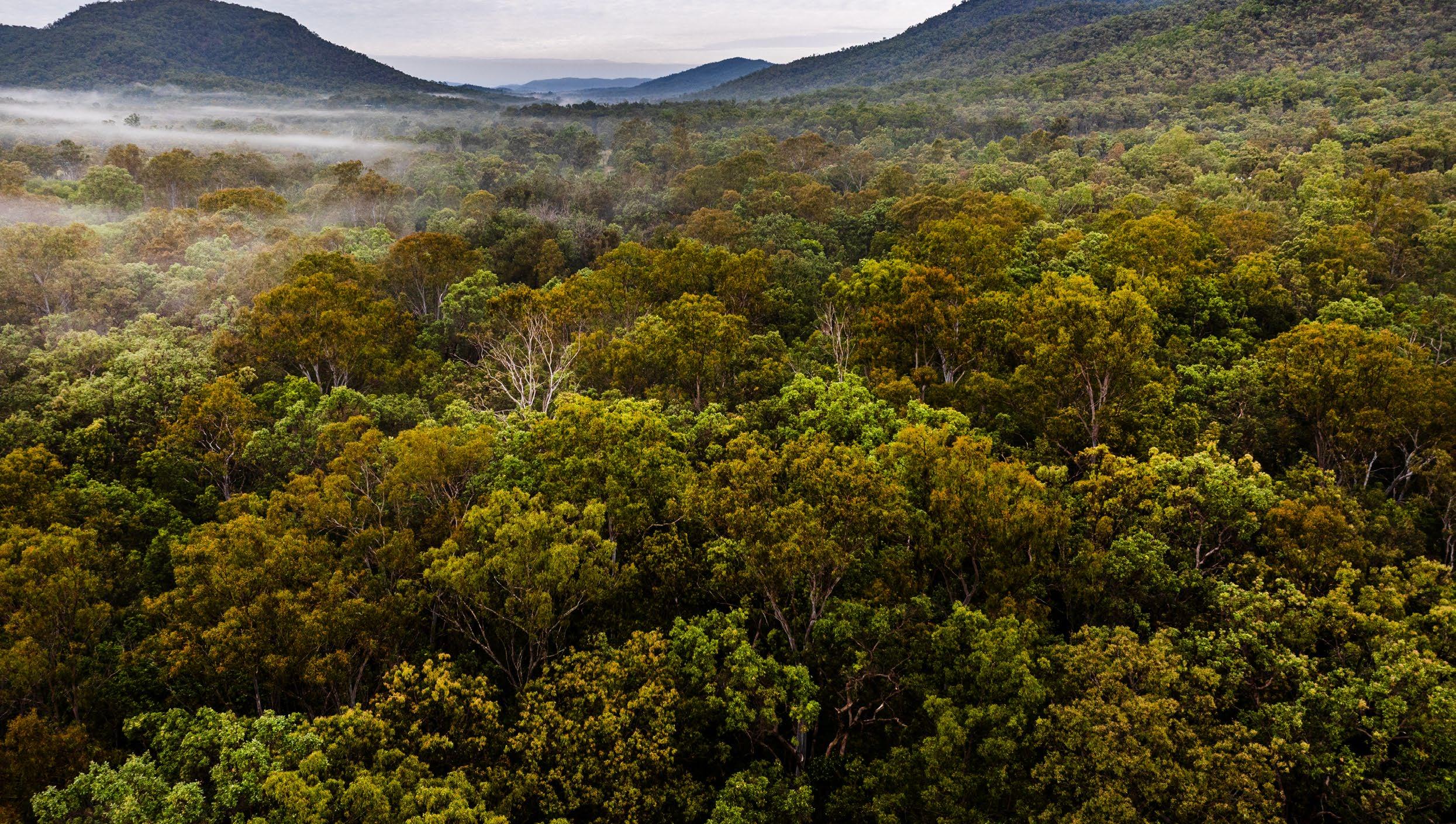
Every two minutes in Australia, a MCG-sized area of forest and bushland is bulldozed, driving the worst rates of deforestation anywhere in the developed world. Beef production is responsible for the majority of the forest loss —resulting in the death, injury or displacement of tens of millions of animals, including endangered species.
A number of organisations have been doing good work to turn this situation around for a number of years. Greenpeace was approached to become involved, based on analysis that our brand and capabilities could make a real difference to the impact of the campaign.
RAISING THE ALARM ON AUSTRALIA’S DEFORESTATION CRISIS
As of 2023, most Australians remained unaware of the sheer scale and devastation of Australia’s deforestation crisis, and the role of beef production in driving the crisis. Our joint report with RSPCA Queensland provided a landmark expose in documenting the true scale of wildlife loss from deforestation.
Our research and publication of a bespoke ranking of procurement policies highlighted major brands like Woolworths, Coles, and McDonalds as the commercial drivers of destruction. Each of these household name businesses was failing to put in place basic requirements to eliminate deforestation from their supply chains. Attracting widespread media coverage, these reports mobilised tens of thousands of supporters to become involved, and put these brands on notice of our campaign objective: to go 100% deforestation-free by 2025.
Watch
In early 2024, we publicly launched the campaign with an animation to emotively make the case for urgent intervention to protect Australian forests from beef production.
ENGAGING AUSTRALIA’S BIGGEST BEEF BUYERS
Working closely with other environmental organisations engaged on the issue to align efforts for maximum shared impact, we then began to increase engagement with specific brands to drive change.
This work also secured a commitment from retailers to a closed-door forum on deforestationfree beef, including the Federal government data and systems that would be needed to help support major brands in making and implementing 100% deforestation free commitments.
VESTED INTEREST RESPONSE FROM THE BEEF INDUSTRY TO BLUR THE ISSUE
Already, a majority of beef producers do not engage in deforestation. Regrettably, industry body Cattle Australia decided to side with the minority, attempting to blur the issue with their own definition of ‘deforestation’ that is different from globally agreed standards. This led to contestation with Cattle Australia in the media over the meaning of deforestation. Our preferred approach is in line with the standards outlined by the internationally acknowledged Subsidiary Body for Scientific and Technological Advice.

Aldi steps up as the first to go deforestation free by 2025
Aldi became the first major business to step up with new commitments to protect Australia’s native forests and wildlife by making a deforestation free by 2025 commitment.
Woolworths promises to go deforestation free by 2025
In August, Woolworths committed to becoming deforestation-free by the end of 2025, and to exclude any beef suppliers who have bulldozed forests after 2020 from the supermarket’s supply chain.

Koala Treated by RSPCA Queensland © RSPCA Queensland
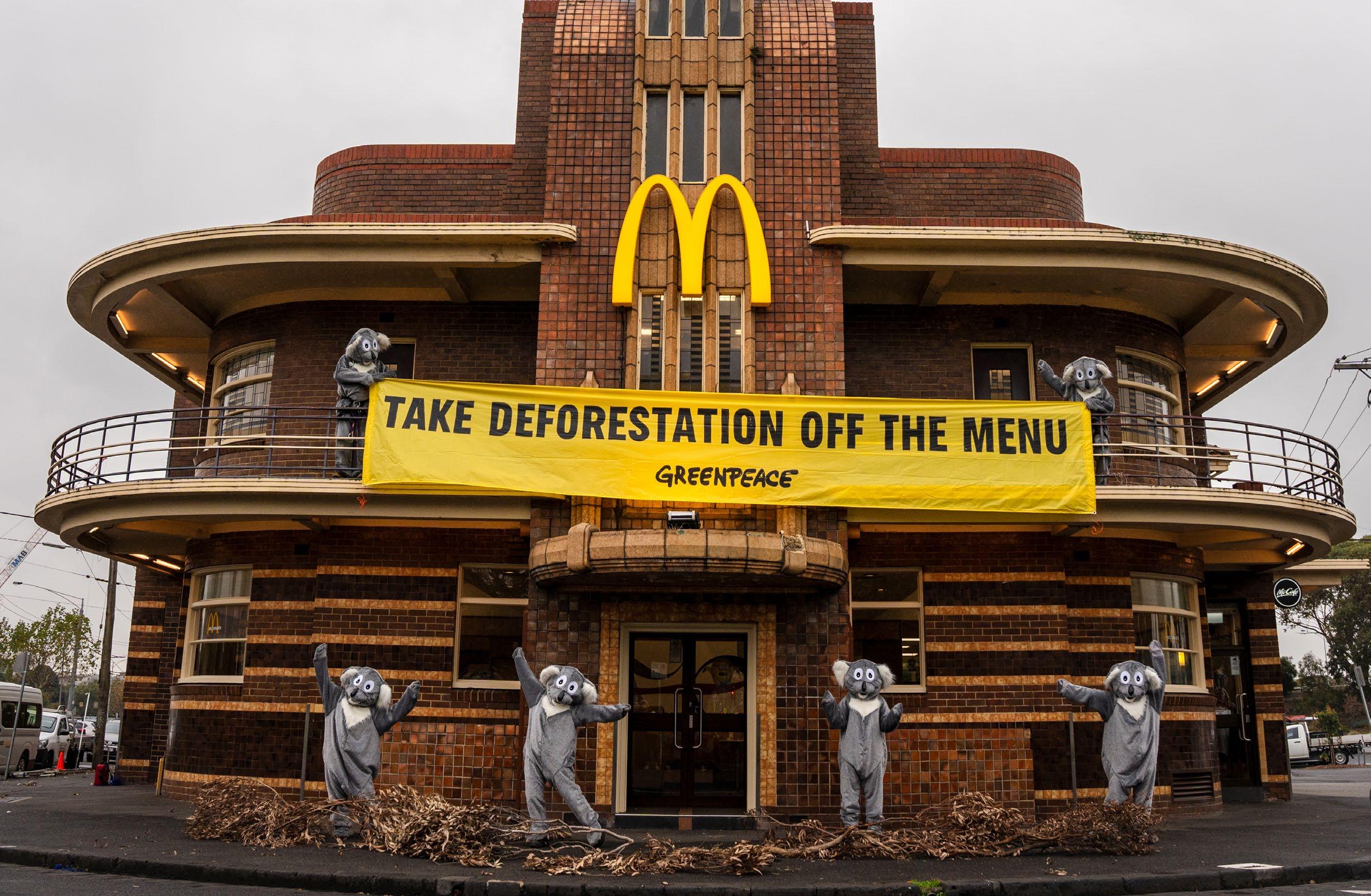
IDENTIFYING MCDONALD’S AS A LAGGARD
The commendable new deforestation free commitments from two of Australia’s biggest supermarkets highlighted other brands as laggards. In order to create further pressure for change at McDonald’s, Greenpeace activists in koala suits scaled the rooftop of the iconic Clifton Hills McDonald's store in Melbourne deploying a banner reading ‘Take Deforestation off the Menu’, and appeared at other stores nationwide. Online, our digital campaign spotlighted McDonald’s failure to protect Australia’s iconic koala. After some weeks of this campaign, McDonald’s committed to eliminate deforestation and address conversion of natural ecosystems in its global supply chain by 2030.


Mcdonald's to take deforestation off its menu by 2030
With 60% of the company’s global beef supplies coming from Australia, McDonald’s commitment will drive significant change across Australia’s entire beef industry. We’re now working to accelerate this impact by persuading the company to shorten its timeline to 2025.
Deforestation Action at Clifton
AND PUT MORE PRESSURE ON COLES
This left Coles as the last remaining major supermarket in Australia to lack a deforestation-free policy. On the back of our success with McDonald’s, we delivered another digital brand jamming campaign that inspired 5,000 supporters to email the CEO of Coles calling for the company to commit to a 100% deforestation free future.
Amidst ongoing behind-the-scenes engagement with Coles executives, we bought the pressure to bear by collaborating with over 60 representatives from Australia’s biggest environmental organisations on a pop up ‘deforestation zone’ outside the company’s AGM in late November. In featuring bulldozers, koalas, and a giant 8m banner demanding action, company shareholders passing by could no longer ignore the company’s continuing inaction on deforestation.

Coles to take deforestation off its shelves by 2025
In late December, Coles shared with Greenpeace Australia Pacific its intent to announce a 100% deforestation free by 2025 commitment once it has been validated by the Science Based Target Initiative. With the company’s 800+ stores accounting for 16% of Australia’s domestic beef sales, the implementation of this commitment will make a significant dent in Australia’s deforestation crisis.

Up next
With deforestation free commitments from five of Australia’s biggest buyers of beef now set to transform the face of Australia’s deforestation and biodiversity crisis, we’ll be working to make sure these brands come through on their commitments, including through accountability systems that can track beef supplies all the way from country paddocks through to our supermarket shelves and takeaway burgers.
Protest Against Deforestation at Coles AGM in Melbourne © Greenpeace / Toby Davidson

WATCH THIS SPACE: Stalled National Nature Law Reforms
On coming into office in 2022, the newly elected Labor Government promised significant changes to Australia’s national environmental laws that would secure better protection for nature.
Disappointingly—and despite an overwhelming majority of the Australian public wanting greater protection for nature— this commitment was not delivered when Labor abandoned efforts to get reforms through parliament in early 2025. The situation deteriorated even further, when Labor rushed through legislation to water down existing laws, to shield the polluting Tasmanian salmon industry from proper scrutiny—leading to a widely reported apoplectic response from Greenpeace and other leading environmental groups.
Up next
Despite the failed progress, Prime Minister Albanese has nonetheless signalled that he has not abandoned commitments to better protect nature including through the creation of a national environmental protection authority. With the ALP now returned to power, holding the government to its word is a priority for Australia’s environment movement.

NATURE
PROTECT THE OCEAN
Greenpeace Australia Pacific is campaigning to keep vast swathes of the high seas off-limits to harmful human activity, stop deep-sea mining before the industry becomes an entrenched problem and support the global push for a plastic-free future.
Global Ocean Treaty
In 2023, Australia became a founding signatory of the Global Ocean Treaty—the international agreement that means that for the first time it is possible to create marine sanctuaries on the high seas.
The ecologically rich Lord Howe Rise/South Tasman Sea region on our continental doorstep is the perfect opportunity for Australia to show leadership under the treaty and towards the globally agreed goal of permanently protecting 30% of the world’s oceans by 2030 (30x30).
A POWERFUL ALLIANCE TO PROTECT OUR OCEANS
In early 2024, Greenpeace Australia Pacific was joined by 13 other leading conservation groups in forming a powerful alliance to jointly advocate for stronger ocean protections, to government and industry.
LABOR TABLES THE GLOBAL OCEAN TREATY IN PARLIAMENT
In late June, the Global Ocean Treaty was tabled in Parliament and referred to the Joint Standing Committee on Treaties, which recommended ratification of the Treaty.
SHOWCASING PUBLIC SUPPORT FOR OCEAN PROTECTIONS
More than 50,000 Australians have now become involved in the campaign, calling on governments of the world to ratify the Global Oceans Treaty in order to bring it into force, while 1,200 have taken the further step of making a supportive submission to the Parliamentary Inquiry into the Global Ocean Treaty and associated legislation.
Amber Bourke swimming with bottlenose dolphins © Greenpeace / Bridget Ferguson

PARLIAMENTARY INQUIRY RECOMMENDS TREATY RATIFICATION
Greenpeace Australia Pacific provided witness testimonies at the Parliamentary Inquiry alongside representatives from Ocean Decade Australia, the High Seas Alliance and the World Wildlife Fund. Alongside the clear community support that we had mobilised, this played a key role in shaping the Inquiry’s final recommendation that Australia ratify the Treaty.
AUSTRALIA MOVES CLOSER TO CHAMPIONING WORLD-FIRST MARINE SANCTUARY
In October, the Australian Government announced a research symposium on the Lord Howe Rise/South Tasman Sea region during the Nature Positive Summit convened by Minister Tanya Plibersek in Sydney. This milestone followed joint lobbying in collaboration with other major environmental organisations and represented a substantive step to securing Australia’s championing of a world-first marine sanctuary.
BRINGING DEEP LIFE TO THE SURFACE
One of the challenges in making the case for the protection of our oceans is that so much is hidden out of sight—particularly on the high seas. One of the key elements of the campaign to protect Lord Howe Rise and the South Tasman Sea is to show the extraordinary marine life that exists beneath the waves. A Greenpeace mission to document the hidden ‘volcanic lost world’ of the wild and remote region revealed breathtaking images of towering seamounts and unique marine life. These extraordinary pictures and footage were then amplified online by influencer Amber Bourke (p. 54), inspiring and mobilising supporters across Australia and beyond to join the push for stronger ocean protection.
Watch this space
Australia’s ratification of the Global Ocean Treaty has now been delayed until after the 2025 Federal Election—making it crucial to continue to maintain momentum. In 2025, the Greenpeace flagship Rainbow Warrior will visit the South Tasman Sea to help drive advocacy efforts, by further documenting the ecological significance and the threats to the region.
Amber Bourke and Olivia Rose holding banners at the Eye of Roach, Lord Howe Island © Greenpeace / Bridget Ferguson
NATURE
Stopping Deep Sea Mining
The oceans are at risk from a new destructive onslaught if the incipient deep sea mining industry—targeting minerals-rich nodules nestled on the seabed— is permitted to gain firm traction. Both as members of the International Seabed Authority, and as ‘big ocean’ states, Australia and Pacific Island countries have the power to make a crucial difference in stopping this potentially ecologically devastating industry before it becomes humanity’s next biggest mistake.
THE FORCES BEHIND THE DEEP SEA MINING PUSH
In May 2024, the Nine Newspapers led with a front page story supported by evidence linking Australia’s former Prime Minister Scott Morrison and the international weapons industry to the global push for deep sea mining. This revelation transformed deep sea mining from being a comparatively niche issue to the national media and political agenda.
MAINTAINING ISSUE VISIBILITY
Maintaining momentum on the issue is a Greenpeace priority, including lobbying in support of a global moratorium on deep sea mining and showcasing the issue as an emerging global threat on World
Environment Day. Through collaboration with 27 civil society organisations from across Australia and the Pacific on a full page joint statement in the Sydney Morning Herald, and the installation of billboards in Canberra alerting commuters to the impending ecological threat of deep sea mining, Greenpeace has continued to shine a light on this issue.
WORLD ENVIRONMENT DAY 2024
Greenpeace Australia Pacific supporters gathered on Bondi Beach (below) to showcase the threat of deep sea mining to marine wildlife in the South Pacific, creating content that travelled widely on digital media.

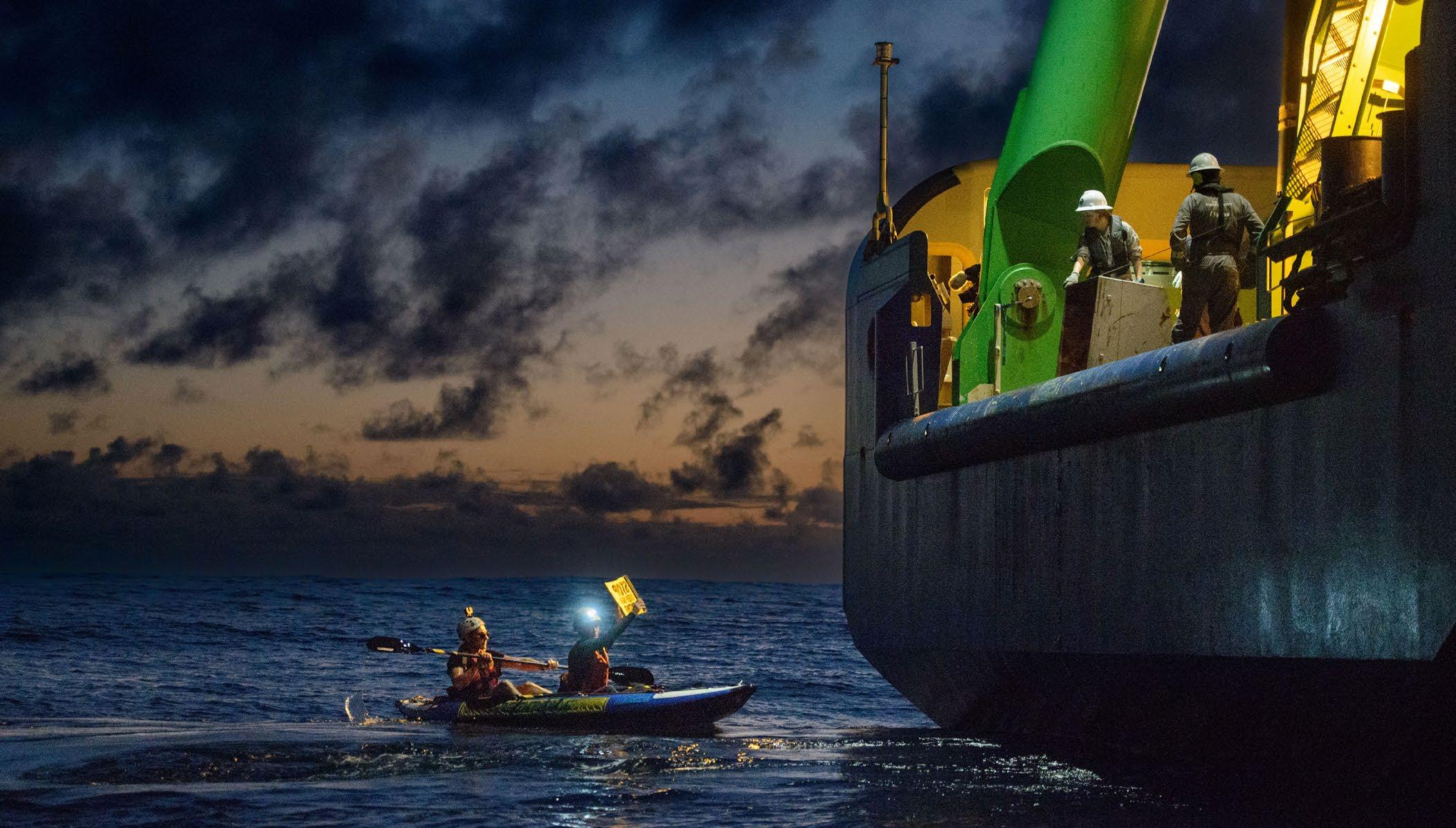
PACIFIC ISLAND GOVERNMENTS AND CIVIL SOCIETY
Pacific Island Nations are especially crucial in deciding the future of deep sea mining. Greenpeace’s campaign work has included extensive engagement with Pacific governments and civil society across multiple different national jurisdictions including the Cook Islands, Tonga, Tuvalu and the Marshall Islands.
DEEP SEA MINING HAS BEEN PUT ON HOLD—FOR NOW
In a significant campaign milestone, at the 29th International Seabed Authority session in Jamaica, two deep sea mining companies were blocked from gaining observer status and member nations agreed to a precautionary pause on deep sea mining.
GREENPEACE’S RIGHT TO PROTEST FURTHER CONFIRMED
During the proceedings, Greenpeace was also threatened with expulsion due to Greenpeace International’s 2023 at-sea protest that blocked The Metal Company’s exploratory ships in the South Pacific for over 300 hours. However in a clear win for both Greenpeace and the wider oceans movement, our ongoing right to participate in the protest was upheld.
Watch this space
With the vote that will determine the fate of deep sea mining slated for the International Seabed Authority’s next meeting in July 2025, the countdown is now on. We’ll be ramping up our campaign to secure support from Australia and Pacific nations for a global ban, with a focus on amplifying the voices of Pacific communities at most risk from the impacts of this destructive industry.
Night Confrontation with a Deep Sea Mining Ship in the at-risk Pacific Region © Martin Katz / Greenpeace

Plastic Free Future
An estimated 12 million tonnes of plastics—primarily produced using oil and gas—enters our oceans every year. A problem at this scale requires a systemic solution and global negotiations are currently underway to secure a Global Plastics Treaty. Australia has a clear opportunity to demonstrate leadership on the issue.
AUSTRALIA IS UNDER PRESSURE TO ACT
Following Australia joining 175 nations in agreeing to create a binding instrument that addresses the impacts of plastic use and pollution on the environment and human rights in 2023, lobbying and advocacy was focused on holding the federal government to active pursuit of this global goal. The significance of these efforts were further strengthened by a historic ruling by the International Tribunal of the Sea (ITLOS) that nation states such as Australia are obliged to act on emissions and pollution towards protecting Earth’s irreplaceable marine environments.
THE CALLS OF OVER 3 MILLION SUPPORTERS
At Intergovernmental Negotiating Committee meeting 4 (INC4) in Ottawa Canada, Greenpeace International delivered a petition with nearly three million signatures from 182 countries, including Australia, calling for a historic and legally binding Global Plastics Treaty. This display of global support sent a clear message: the time to move beyond plastic pollution toward a healthier, more sustainable future is now.
BUILDING LOCAL SUPPORT FOR GLOBAL IMPACT
Greenpeace Australia Pacific participated in the global engagement push for governments across the world to agree on a strong Plastics Treaty at INC5 in South Korea in March 2025.
Watch this space
While the INC5 meeting in Busan, South Korea was supposed to be the final round of negotiations, the 170 governments in attendance failed to finalise the Treaty. With the talks now set to extend into 2025 and beyond, Greenpeace will continue to campaign for a strong and ambitious treaty that not only cuts plastics production by at least 75% by 2040, but also seeks to achieve a full phase out.
A crab trapped inside a discarded cup © Noel Guevara / Greenpeace
PACIFIC CLIMATE JUSTICE
Pacific Island Nations are on the frontlines of climate change damage despite contributing less than 0.03% of global emissions. The gravity of this injustice gives Pasifika governments and communities moral authority which, combined with their nation state standing and capacity to work as a bloc, creates opportunities for Pacific Island Nations to exercise power to drive international climate action.
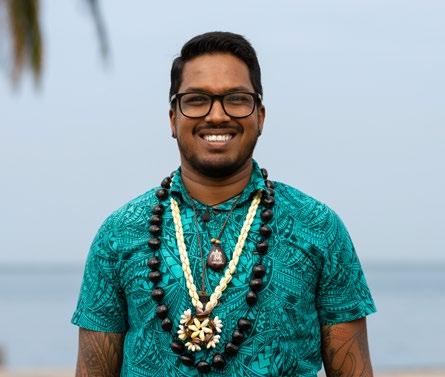
Shiva Gounden Head of Pacific

"Greenpeace has a long and storied history in the Pacific, continued today with a strong Pasifika team, collaborating with civil society, communities and governments in key geographies across the region, amplifying Pasifika voices in their calls for stronger, more urgent global action on climate mitigations and adaptation."

Peaceful Demonstration at the Peace Palace during ICJAO Hearings
© Emiel Hornman / Greenpeace
Taking Climate Justice to the World’s Highest Court
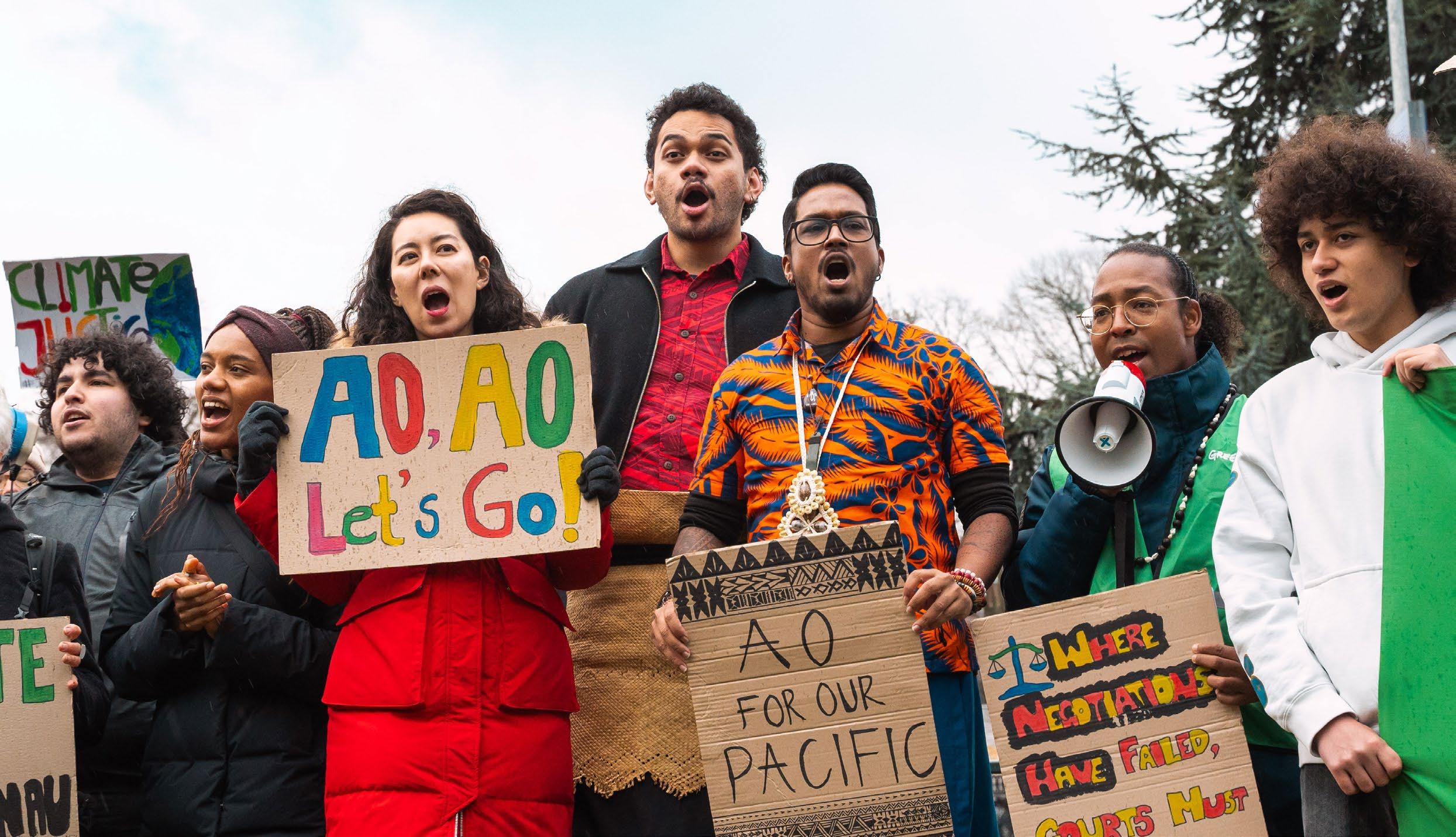
It is a truly extraordinary story. In 2019, a small group of 26 Pacific Island university students were challenged to find the most impactful way to shift the dial on climate action worldwide. This seed grew into an unprecedented global campaign that, in 2024, resulted in the International Court of Justice (ICJ) examining the obligations owed by countries to protect human rights from climate change.
The Pacific Islands Students Fighting Climate Change (PISFCC) forms an alliance with the Vanuatu government and other civil society organisations including Greenpeace.
In a world first, 132 countries at the United Nations’ General Assembly unanimously sponsor Vanuatu’s request for the ICJ to develop a legally binding Advisory Opinion (AO) on climate change and human rights.
The Rainbow Warrior visits Pacific Island Nations, gathering testimony and encouraging governments to put in strong submissions.
The ICJ receives 91 written submissions for consideration from nation states and nongovernmental organisations, and hears the oral submissions of over 100 countries across 2 weeks at The Hague.
THE GLOBAL CASE FOR CLIMATE JUSTICE
On the back of our work throughout 2023 building the capacity of remote and climate vulnerable Pacific Island nations to develop robust and persuasive submissions, the ICJ received a record 91 submissions for consideration. Greenpeace’s own non-state party submission was described by United Nations Special Rapporteur on Human Rights & the Environment, David Boyd as:
“...one of the most powerful legal documents I have ever read— weaving stories and law into an unorthodox yet compelling brief”.
HOLDING AUSTRALIA ACCOUNTABLE ON THE GLOBAL STAGE
As over 100 countries began making their oral submissions to the ICJ’s December hearings at The Hague in the Netherlands, a clear divide in global positions became apparent: while Pacific Island nations and other vulnerable states made submissions in support of a strong ruling, major polluters —including Australia—argued a contrary position that obligations should be addressed through existing commitments. It was extremely disappointing to see Australia take such a stance—which was conveyed to the government through media and lobbying.

Pacific voices taking centre stage
Our Pacific team on the ground in The Hague working in deep collaboration with aligned governments and civil society ensured that the lived realities of Pacific Island communities would reverberate through the court as the hearings unfolded:
PEACE PALACE DEMONSTRATION
We joined a powerful and diverse assembly of voices from around the globe in peaceful protest in front of the Netherlands’ Peace Palace.
Watch: the Pacific’s Journey for Justice
Filmed during the Rainbow Warrior’s 2023 voyage through the Pacific Islands, the Journey for Justice documentary has already been viewed almost 150,000 times.
© Emiel Hornman / Greenpeace
YUMI—THE WHOLE WORLD
We also showcased the power of solidarity in the fight for climate justice by screening the documentary, YUMI—The Whole World, followed by a Q&A session with its producers.
THE PEOPLE’S MUSEUM OF CLIMATE JUSTICE
Together with Greenpeace Philippines, we curated The People's Museum of Climate Justice which, in showcasing stories of survival and resilience from communities disproportionately impacted by the climate crisis worldwide, reinforced that polluters must start paying for damage caused to both people and the planet.
CANDLELIGHT VIGIL
Our campaigners and Pacific Island activists participated in a candlelight vigil in a moment of solidarity, honoring the individuals and communities who have dedicated their lives to the fight against climate change, and remembering those who have lost their lives to climate impacts.
THE PEOPLE’S ASSEMBLY
Greenpeace also worked alongside World’s Youth for Climate Justice (WY4CJ) and Pacific Island Students Fighting Climate Change (PISFCC) to gather testimonies from those bearing the brunt of climate inaction. Later presented inside the ICJ on behalf of civil society, these testimonies amplified the case for climate justice.



Lawyers from Greenpeace Australia Pacific and Greenpeace International attended proceedings in The Hague, providing expert commentary to inform and empower wider civil society and to enable the media to hold governments to account.
“Without the fire burning inside young people from across the world, this movement wouldn’t have been what it is today. They have been our wayfarers navigating the stars so that together we can fight for justice—the most consequential fight for justice this world will ever see.”
Shiva Gounden Head of Pacific
The world is now waiting
The ICJ is now expected to deliver its Advisory Opinion in 2025, an outcome which promises to deliver unparalleled clarity on the international legal obligations countries bear in safeguarding people from the impacts of climate change.
Flora Vano and Vinzealhar Nen, who testified at The People's Assembly © Emiel Hornman / Greenpeace
Candlelight Vigil at the ICJAO © Emiel Hornman / Greenpeace
Peoples’ Museum for Climate Justice © Emiel Hornman / Greenpeace
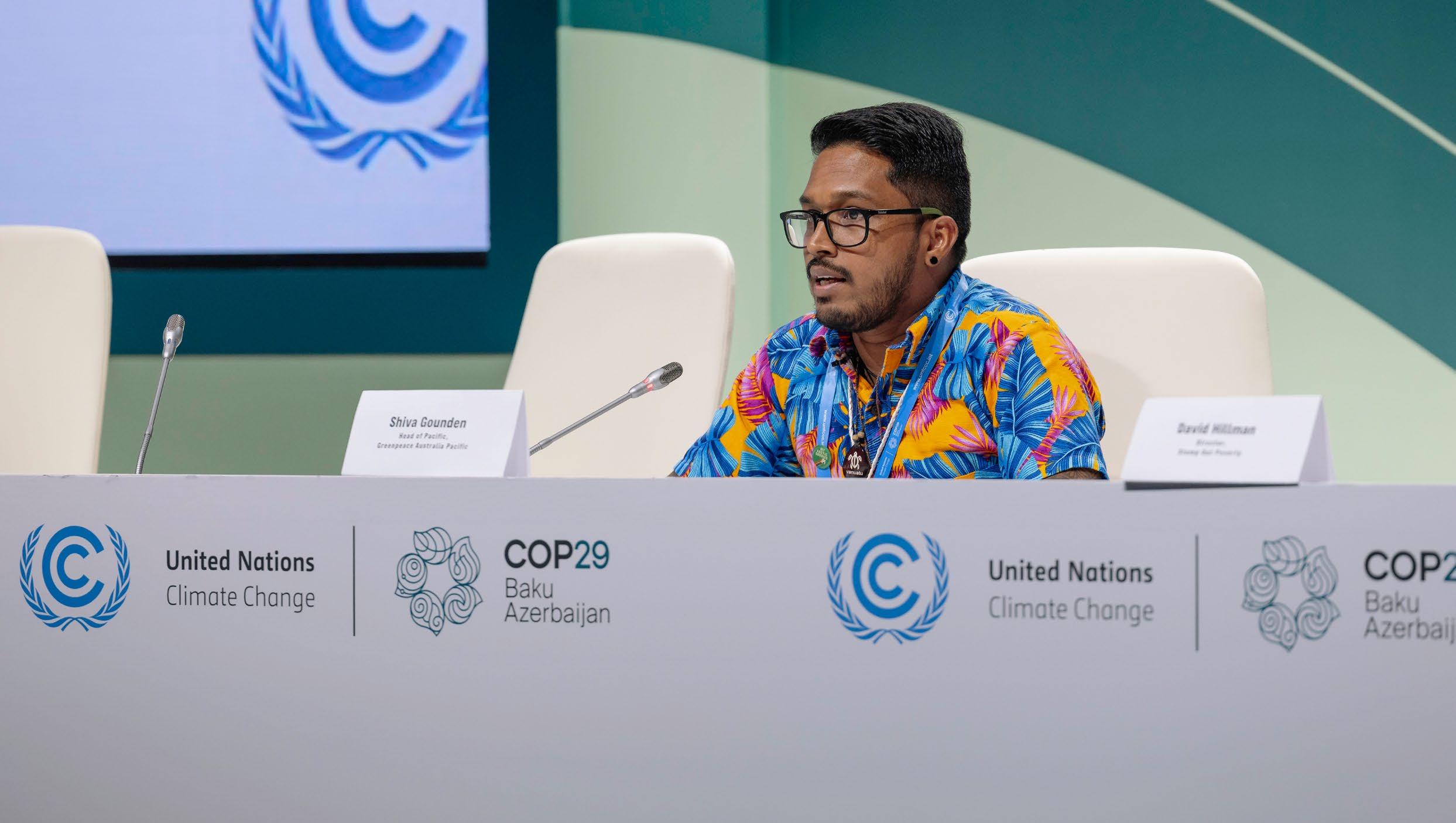
The Road to COP31
The COP29 chronicles
As a global environmental network, Greenpeace has deep and longstanding experience and expertise in the UNFCCC COP process—we’ve been there for the highs, and the lows. Now with Australia-Pacific in the box seat to host COP31 in 2026, the spotlight is on our region. Here, Head of Pacific Shiva Gounden candidly shares the highs and lows of the fight for climate finance— additional money-flows to enable climate adaptation in developing nations— at COP29 in Baku, Azerbaijan.
WEEK 1
11TH NOVEMBER 2024
COP29 has started in Baku, and I’m here, helping represent Pacific Island nations in their push for a new climate finance deal that truly supports the Pacific and Global South. With 2024 set to breach 1.5 degrees, this summit is crucial. We need to secure global agreement on a climate finance deal that includes adaptation, mitigation, and loss and damage, in the form of grants rather than loans to avoid deepening debt. Any kind of climate finance must also be accessible and transparent so the hardesthit communities can act quickly.
12TH NOVEMBER 2024
The first two days were spent in the G77+China planning meeting—a bloc so big (134 countries plus China) that it could probably negotiate a treaty with aliens if it
had to. But achieving their unified agreement on anything—finance, mitigation, loss and damage, or even how many toilet breaks we get—is like herding cats. On roller skates. Through an oil slick. Still, we push through, because the fate of millions, including Pacific Islanders, rests on these negotiations. But, the rushed decision on the rules around carbon credits has me worried. Crucial decisions need proper discussion, and hasty decisions certainly don’t bode well for the rest of the talks.
13TH NOVEMBER 2024
Day three, and exhaustion is setting in as climate finance negotiations take over. The New Collective Quantified Goal (NCQG) promises real climate finance, but so far, it’s just words. The draft started at 36 pages, and after endless revisions, was
Shiva Gounden Speaks on Climate Impacts at COP29 in Baku © Marie Jacquemin / Greenpeace

shortened by just one and a half pages. Now, in informal meetings, the text is only getting more complicated. Meanwhile, the big polluters keep blocking progress, and the Azerbaijani President just called fossil fuels a “gift from God”. If that’s the case, I think we’d all like a refund.
17TH NOVEMBER 2024
At the end of Week 1, negotiations were still dragging and morale was low. With the climate finance goal still frustratingly vague, we gathered for a meal in solidarity. In a whirlwind of exhaustion, Azerbaijani food and raw honesty, we become united in our determination that Week 2 would be different. Together, we would push harder for real climate finance, stronger mitigation efforts, and greater commitments to national emission reductions, while ensuring smaller developing nations are never forgotten in the negotiations.
WEEK 2
19TH NOVEMBER 2024
The days are now blurring together, but yesterday cut through the exhaustion. After once again sharing the harsh realities facing Pacific Islanders with news outlets from all over the world, our team unpacked a powerful package—toys, photos, cultural
treasures, even pictures of missing loved ones. Each item carried a story of loss, of resilience, and of survival, giving all that held them in their hands a stark reminder of the very real lives at stake behind the negotiations here at COP29. These stories are our fuel. Our reason to keep pushing even when the road ahead feels impossibly steep.
20TH NOVEMBER 2024
Something has just happened that’s so monumental that I actually broke my principled stance of never entering the Australian pavilion during any COP.
AUSTRALIA ANNOUNCES $50M LOSS & DAMAGE FUND
In a surprise bombshell, Australia announced $50 million into the Loss and Damage Fund—the very thing we’ve been pushing so hard for, the one we’ve been championing, and that civil society in Australia and the Pacific have all rallied behind.
Why is this such a big deal? First, it’s a significant commitment in comparison to pledges from other developed nations like the US. Second, it marks the first time the Australian government has genuinely
COP29 Day of Action in Baku © Marie Jacquemin / Greenpeace
listened to the demands of Pacific Island communities. And perhaps most importantly, this contribution isn’t just for the Pacific—it’s for all climate-vulnerable nations, especially those hardest hit by the climate crisis. Now, we must push Australia to keep this momentum going for their Pacific family by turning its words into lasting action.
21ST NOVEMBER 2024
Today, we made some real noise. Instead of hosting ‘just another panel discussion’ as a side event, we created a courtroom. A real one. Young people from across the world— Vanuatu, Banaba, Kenya, Bangladesh, Costa Rica, Canada, Tuvalu, Tanzania, Nigeria, Spain, Colombia—took the floor, delivering testimonies of climate impacts that sent chills through the room. This is our fight, our moment to amplify those whose voices have been silenced for far too long.
22ND NOVEMBER 2024
The negotiations are still continuing—and on that lets just say, if silence were progress, we’d be winning. The high-level dialogues have been mostly political fluff—countries showcasing their “greatest hits” while sidestepping the uncomfortable truths. A few called for real, accessible climate finance (finally!), and some even dared to mention holding polluters accountable. But for the most part? It all felt a bit like
everyone had rehearsed their lines, but somehow, said nothing at all. A bit like that Ronan Keating song: You say it best when you say nothing at all.
24TH NOVEMBER 2024
Today, the final COP29 text was released, including a USD $300 billion climate finance goal. This falls far short of the trillions needed for climate-vulnerable nations like the Pacific to protect themselves and adapt to the impacts of the world’s biggest polluters. Our islands are more than disaster zones—they are rich in culture, resilience, and beauty. Yet, the weight of sharing these stories of loss and devastation continues.
25TH NOVEMBER 2024
Despite yesterday’s disappointment, I leave Baku today with a clear sense of hope having met some of the most incredible and diverse people from Azerbaijan through to the Pacific who are just as passionate as they are beautiful. Together our fight for climate justice will go on, with COPs 30 and 31 now on the horizon.
Watch this space: future COPs
The painstaking COP process is not delivering the kind of change at emergency speed and scale that the world needs—nevertheless the Paris climate goal remains a vital benchmark.
COP30, being hosted by Brazil in Belem in Amazonia is expected to have a strong focus on addressing deforestation—one of the largest sources of greenhouse gas emissions and biodiversity loss.
At the time of writing, the Australia-Pacific co-hosting of COP31 is still to be confirmed—with the re-election of the Albanese government we are hopeful this will go ahead.
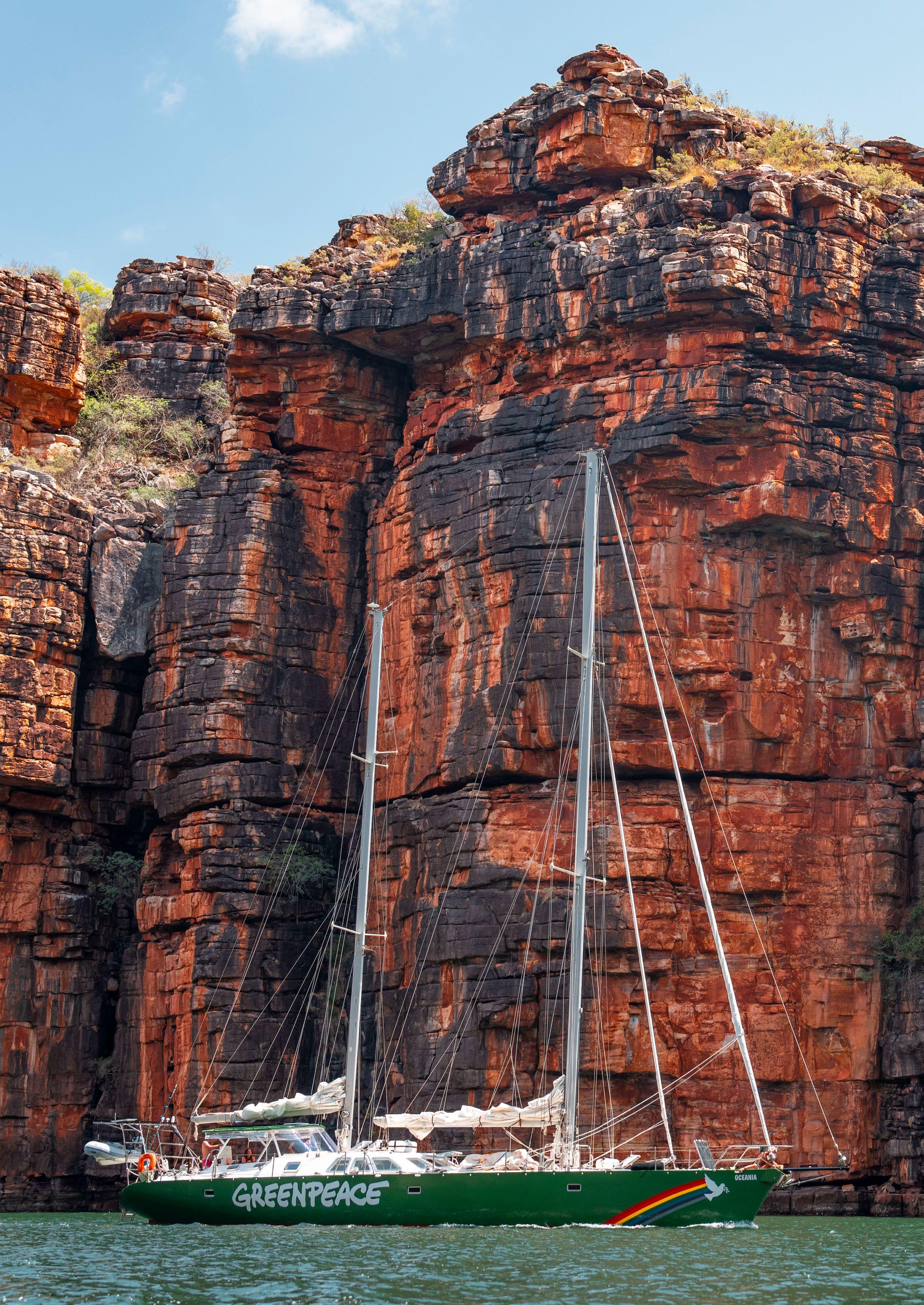
GREENPEACE AT SEA
—OCEANIA
2024 heralded an era of supercharged atsea campaigning for Greenpeace Australia Pacific, with the completed refit and official launch of the Oceania—our first ever campaigning vessel to be permanently based in the Australia-Pacific region.
SV Oceania Vessel Visits the Kimberley Region, Western Australia © Greenpeace / Oliver Clarke

In a Snapshot: Oceania’s 2024 Adventures
12,000 NAUTICAL MILES
4 SKIPPERS
20 VOLUNTEER CREW MEMBERS
2 ENGINEERS
11 PORTS
POWERED BY 2500+ GREENPEACE DONORS
OCEANIA HAS BEGUN ITS EVOLUTION INTO A CAMPAIGNING POWERHOUSE
After a 4,600 nautical mile journey from Singapore, the Oceania finally arrived on the Gold Coast ready for the first stage of its transformation into a fit for purpose campaign boat. Repainted with Greenpeace’s iconic rainbow and dove, the vessel also underwent a complete rigging replacement and major upgrades to its electronics and electrical systems. Additional bunks and enhanced safety features expanded the vessel’s onboard crew capacity, with new bow thrusters adding improved maneuverability.
The first stage of Oceania’s transformation.
FIRST STOP: THE PILBARA, WESTERN AUSTRALIA
Following its refit, Oceania cast off its lines for an epic 3,500 nautical mile voyage to Western Australia—the very heart of our country’s biggest climate fight—where over 130 community members took to the waters off Exmouth Town Beach on paddle boards, kayaks, surfboards, jet skis and dingies to send a powerful message calling for the ecologically significant Scott Reef to be protected from Woodside’s drill.
Whilst en route back to the East Coast, the Oceania’s course took our crew directly past fossil fuel giant Woodside’s Scarborough project (p. 20), allowing us to document the company’s preparations to drill. Our unexpected presence triggered cease and desist letters from Woodside, signalling the company’s disquiet at Greenpeace’s new ocean-going capabilities.
RISING TIDE: NEWCASTLE
Back on the East Coast, Oceania provided support at Rising Tide’s Peoples’ Blockade of Newcastle’s coal port, where the towering ships passing every few hours maintain Australia’s status as the world’s thirdlargest fossil fuel exporter. Anchored in the port, Oceania provided a refuge for weary kayakers, a platform for legal observers and photographers, and a front-row seat to the action as it unfolded.
On the final day, as hundreds of activists paddled into the channel in what became the largest act of civil disobedience for climate justice in Australian history, Oceania’s presence became a rallying point for resistance—a powerful symbol of democratic opposition to the fossil fuel industry.
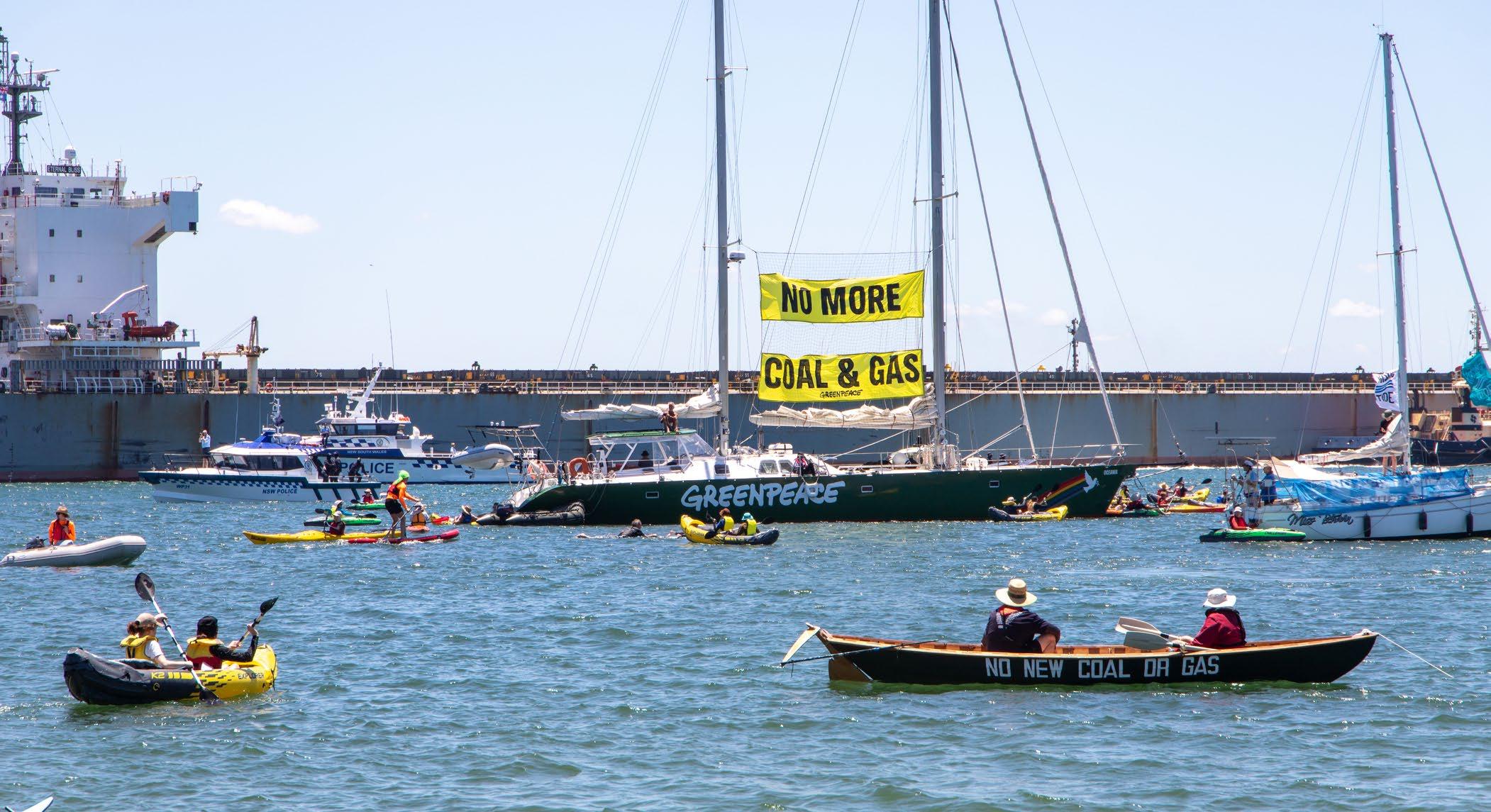
Rising Tide Blockade of the World’s Largest Coal Port in Newcastle, NSW © Greenpeace
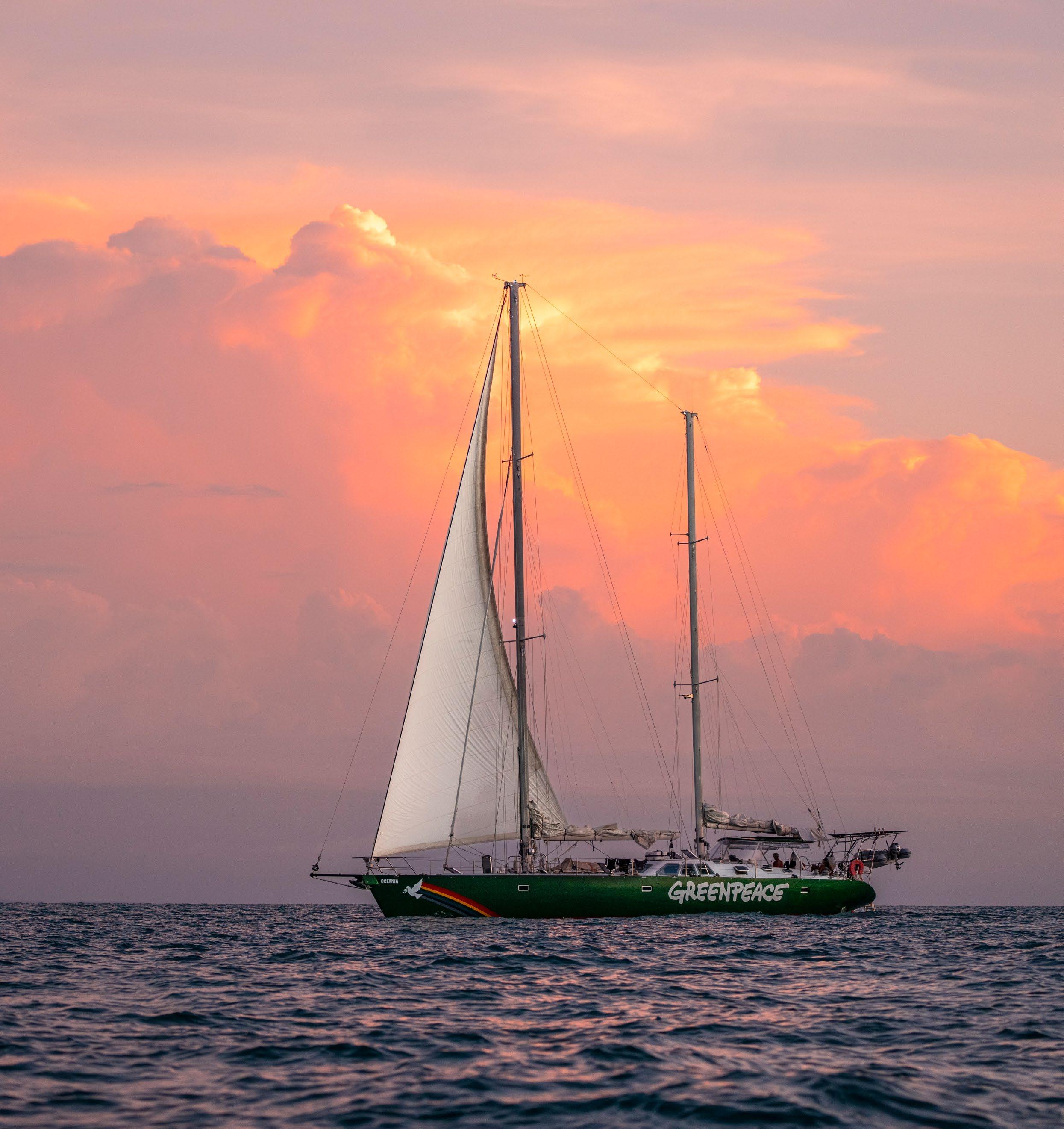
Oceania’s story is just beginning
At-sea campaigning has been crucial to Greenpeace’s impact over the past 50 years, giving us the capacity to document environmental crimes at sea and intervene to prevent destructive activity.
In having the capacity to reach every corner of the vast Australia-Pacific region from Queensland’s Great Barrier Reef through to the South Tasman Sea and from the waters of Pacific Island nations through to Western Australia’s Scott Reef, the Oceania will continue this tradition of exposing, documenting, and peacefully confronting the many threats to our magnificent oceans throughout 2025, and beyond.
SV Oceania Visits Adele Island, Western Australia © Greenpeace / Oliver Clarke
Reaching Millions
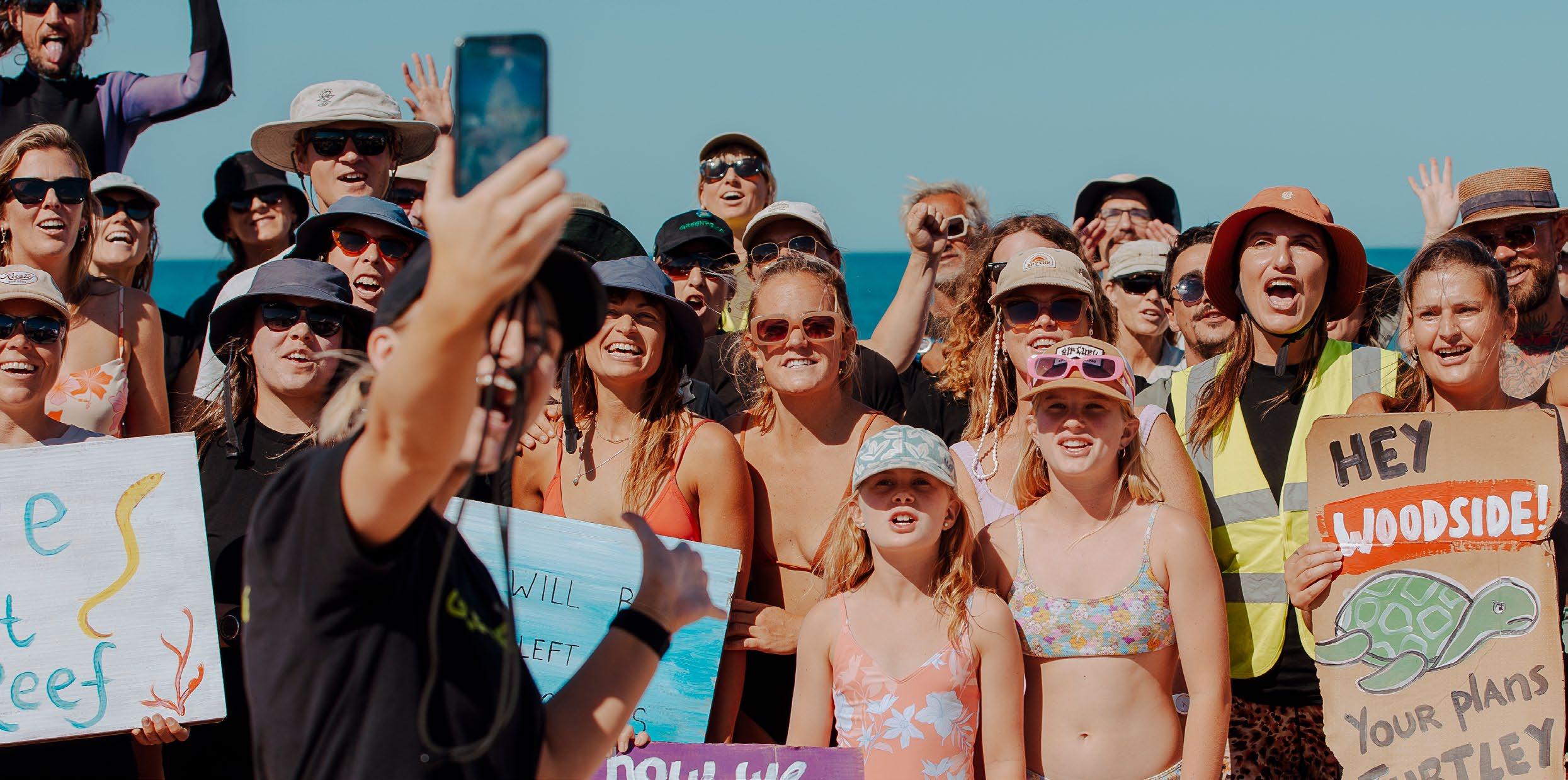
Through strategic use of communications, investigations, media, digital engagement, influencer collaborations and creative initiatives Greenpeace Australia Pacific reaches millions of people across Australia and the Pacific with opportunities to take action and inspiration to become involved in campaigns, demanding greater climate ambition and action to protect nature.
COMMUNICATIONS & MEDIA
Our communications and media team helps raise public awareness and shape media narratives by identifying issues, countering disinformation, exposing vested interests, and amplifying crucial voices, towards building momentum for campaign impact.
WE EXPOSED AUSTRALIA’S HIDDEN DEFORESTATION CRISIS
To address the lack of awareness around Australia’s deforestation crisis, our communications team partnered with RSPCA Queensland to co-author The Ongoing Animal Welfare Crisis from Deforestation. This report exposed the devastating toll on wildlife, revealing that 100 million native animals— including endangered koalas and northern quolls—are killed, injured, or displaced each year, largely due to forest clearing for beef production.
Our media efforts to amplify the report’s findings generated widespread coverage, and our wider forests protection work reached over 1.3 million people across social media and our website, amplifying public
pressure. Alongside a scorecard exposing the weak deforestation policies of major Australian brands, this work helped build the public awareness and support critical to our campaign’s success in securing 100% deforestation-free commitments from Australia’s biggest beef buyers (p. 30).
INVESTIGATIONS
Greenpeace Australia Pacific’s investigations spotlight environmental wrongdoings and exposes the decision-makers, companies and governments responsible.
CORPORATE LOBBYING AGAINST
AUSTRALIA’S
NATURE LAW REFORMS WAS NEUTRALISED
In July 2024, our Freedom of Information investigation revealed the closed-door lobbying tactics of mining magnate Gina Rinehart and mining giant Rio Tinto against the Australian government’s once-in-ageneration nature law reforms. This expose, paired with a formal letter of complaint to Rio Tinto’s global head, was featured exclusively in The Sydney Morning Herald
“Stop Woodside’s Drill” Community Flotilla in Exmouth, WA © Greenpeace / Brooke Pyke
and The Age, and gained further traction in The Saturday Paper and The Post newsletter.
Rio Tinto appeared to subsequently shift its position. By October 2024, Rio Tinto had publicly backed the Federal Government’s proposed reforms, including a stronger environmental regulator.
DIGITAL ENGAGEMENT
Every day, we engage with our supporter base—numbering over a million across all platforms— through digital content that inspires a strong shared passion for our planet, and mobilises people across Australia and the Pacific to take action.
NEARLY HALF A MILLION CALL FOR MINISTER PLIBERSEK TO SAVE SCOTT REEF
With the fate of Woodside Energy’s Browse and North West Shelf projects (p. 20) in Environment Minister Tanya Plibersek’s hands and with the ecologically significant Scott Reef at stake, we knew mobilising our supporters to create public pressure would be critical. Across social media, we spotlighted the breathtaking marine life at risk using stunning imagery and video captured during the Rainbow Warrior’s 2023 tour. We also kept our supporters fired up with key campaign updates—from the EPA’s damning advice on Woodside’s plans through to hard-hitting evidence of the Burrup Hub’s climate and environmental dangers. Then,
at key moments, our emails turned concern into action, driving a record-breaking 440,000+ petition signatures calling for Plibersek to make the right decision (p. 21).
At Parliament House in August 2024, Minister Plibersek warmly received Greenpeace’s delivery of this petition as a 47-meter-long scroll, sealed inside a giant hand-blown glass bottle. Now sitting in her office, this ‘message in a bottle’ is an unmissable daily reminder of the overwhelming public demand for her to stop Woodside’s Burrup Hub in its tracks.

© Greenpeace / Toby Davidson
CREATIVE CONFRONTATIONS
Creative confrontations have always been at the core of Greenpeace's DNA. By escalating urgent issues with bold actions at scale we ensure our campaign messages are heard loud and clear across the country.
MCDONALD'S GOES 100% DEFORESTATION
FREE AFTER BEING CALLED
OUT
With Australian beef supplying 65% of McDonald's stores globally, we knew that persuading the company to go 100% deforestation-free would drive significant change for our native forests and wildlife. With McDonald's still lagging on this commitment despite our sustained inside track engagement efforts, Greenpeace took action: six activists dressed as koalas scaled the golden arches of an iconic McDonald’s outlet in Melbourne to drop a banner demanding that the fast food giant take deforestation off its menu. In the weeks following this high profile action, volunteer koala activists continued making noise at McDonald's stores around the country.
Our digital engagement and creative teams amplified the impact of this creative action by rolling out a hard hitting ‘koala burger’ themed brand jamming campaign on social media and at bus stops. The value of bold and creative campaign tactics such as these was confirmed when, following this increased public awareness and pressure, McDonald's committed to a 100% deforestation-free supply chain by 2030 (p. 32).
CREATIVE PARTNERSHIPS
Strategic partnerships with like-minded pop culture influencers play a crucial role in expanding our reach to new and diverse audiences. By collaborating with these voices, we can foster greater awareness, inspire action, and drive meaningful change on a global scale.
PUBLIC SUPPORT FOR AUSTRALIA’S ESTABLISHMENT OF MARINE SANCTUARIES IS SWELLING
Freediving champion Amber Bourke, officially known as the 'deepest woman in Australia' due to her record breaking 81 metre free dive on a single breath, joined our campaign team on a documentation trip to Lord Howe Island, where the Australian government has an opportunity to establish a marine sanctuary after ratifying the Global Oceans Treaty (p. 35).
The stunning content capturing Amber’s 5 metre free dive surrounded by dolphins, Galapagos sharks, and mutton birds was later shared on both Greenpeace and Amber’s Instagram and TikTok accounts. In reaching 63,500 views on content across all platforms bringing a diverse audience to our Oceans campaign message, these posts helped drive our petition for Australia’s ratification of the Global Oceans Treaty to reach 44,260 signatures by the end of 2024.

CREATIVE INITIATIVES
Our creative team provides strategic leadership, skills, and tools to produce powerful, emotive content that connects with audiences, strengthens our brand, and drives campaigns. Through compelling imagery, storytelling, and design, Greenpeace is able to stay dynamic, relevant, and impactful in an ever-changing world.
THE VOICES OF KOALAS REACH INTO THE HEARTS OF AUSTRALIANS
With much of Queensland’s deforestation occurring out of sight from most Australians, our campaign team faced the challenge of raising awareness about the scale of the issue to effectively mobilise public pressure on the corporations responsible.
To overcome this barrier to campaign success, our creative team partnered with Australian production studio Photoplay/ DropBear to produce a powerful stop-motion animation featuring Australia’s beloved koala. By both educating and tugging at the heartstrings of viewers, the film played a key role in driving 42,220 supporters to sign our petition within 12 weeks of the campaign’s launch, calling on the government to legislate against agricultural deforestation.
Watch: the making of our forests launch animation
At the time of writing, our deforestation launch video has been named a finalist in two categories at the prestigious SHOTS Asia Pacific Awards. This recognition has opened up exciting collaboration opportunities, expanded our reach, and boosted our media presence.
Evolving Impact
The impact of any given campaign doesn’t end when the headlines fade. Policies evolve, industries respond, and communities act—further building the momentum for change.
From Polluter to a Renewables Powerhouse: AGL’s Continued Transformation
Greenpeace’s 18 month campaign that created the conditions for AGL to begin its transformation into a renewable energy powerhouse is continuing to drive impact even today. Read on to discover how.
Coal-fired electricity was responsible for roughly a third of Australia’s annual domestic emissions, with AGL contributing 8% of this total.
Despite the dangers of global warming, AGL planned to continue burning coal until 2048—well beyond the recommended 2030 cut-off—and was even considering a demerger to hide its polluting assets.
Greenpeace’s campaign against AGL exposed its greenwashing, sparked public backlash, and forced a reckoning on its climate impact. Our satirical campaign led to a failed lawsuit, while nominating climate activist Ashjayeen Sharif to AGL’s board further highlighted the company’s poor environmental record. Behind the scenes, a shareholder revolt secured a record 55% support for Paris-aligned climate targets. Under mounting pressure from Tomago Aluminium and Grok Ventures for change, AGL scrapped its demerger plans and overhauled its leadership, marking a turning point toward renewables.
Now dominated by clean energy advocates, AGL’s new board announces shortened coal closure timelines and a $12 billion investment in renewable energy—signalling the end of Greenpeace’s campaign.
The first of AGL’s coal stations—Liddel—formally closes, with Bayswater to close in 2030-33, and Loy Yang A to close no later than 2035.
AGL leverages an unexpectedly healthy full-year profit to acquire an Australian big battery and solar farm, and appoints Miles George—former head of the Clean Energy Council and renewable energy veteran—as its new Chairman. These developments have further solidified the company’s commitment to renewable energy.
Power Play
Discover how Greenpeace’s campaigning created the conditions for a fundamental change in AGL’s direction, as well as a global precedent for how a major climate polluter can be successfully challenged and transformed.
Defending Democracy

The law should protect climate and environmental defenders, hold big polluters to account, and safeguard the ecological balance of our planet.
Yet, as the climate crisis deepens, fossil fuel giants are deploying lawsuits that drain the valuable resources of those defending our climate. At the same time, a surge in draconian anti-protest laws and harsh penalties is silencing even the most peaceful of climate and environmental activists.
Greenpeace Australia Pacific is committed to defending the movement’s democratic right to protest peacefully and leverage the law as we campaign to secure action on climate and nature.
CONTINUING PEACEFUL CIVIL DISOBEDIENCE
As a powerful tool in driving change, creative actions and peaceful protests were fundamental to our effectiveness in 2024, with our specialist creative confrontation unit delivering a number of activities both on land (p. 32 and 37) and at sea (p. 50). Every participating activist received training, and legal guidance to help keep them safe.
DEFENDING FUTURE ACTIVISM
In 2024, we welcomed Defend the Defenders under our wing to support its evolution into an independent organisation. This program launched in May 2025 as Climate Defenders Australia—a holistic legal representation
service for activists—will be crucial to keeping climate and environment activism alive and thriving in Australia.
ENSURING LAWFUL DECISION MAKING
Strategic litigation can establish legally binding precedents in favour of our climate and environment. In 2024, this work included our legal campaign for a progressive Advisory Opinion from the International Court of Justice (p. 44), anticipated to open more avenues for strategic climate litigation worldwide. We also continued to maintain a standing readiness to defend ourselves against lawsuits bought by vested interests.
ADVOCATING FOR LEGAL PROTECTIONS
To protect the future of the climate and environmental movement in Australia, Greenpeace Australia Pacific has joined several coalitions working in collaboration to support those in the broader movement facing legal threats, and to add our voice to ongoing advocacy efforts for legislation that prevents the misuse of lawsuits by vested interests.
Greenpeace Australia Pacific employs in-house counsels who oversee this critical work, supported by the highly valued legal expertise of a suite of external professional legal service providers.

YOUR SUPPORT IN ACTION
Together, we are a powerful force speaking out together for a greener, more peaceful Earth.
Amber Bourke swimming with bottlenose dolphins (Tursiops), Lord Howe Island
© Greenpeace / Bridget Ferguson
We are part of a global network of 25 organisations across 55 countries, with our combined supporters numbering in the tens of millions.
Working in deep collaboration we work alongside aligned entities and individuals, because collectively we can drive greater impact.

With the right capabilities—our highly experienced staff are distributed across our region, with the majority based in Sydney.
While maintaining full independence— we never accept donations from any government, political party or business.
All made possible by over a million supporters just like you.
Whether you volunteer your time, donate to campaigns, raise your voice, sign petitions, join rallies, or share our message online, you are Greenpeace’s beating heart.
You are both our fortitude and power.
Thank you.
How your support drives Greenpeace’s Impact
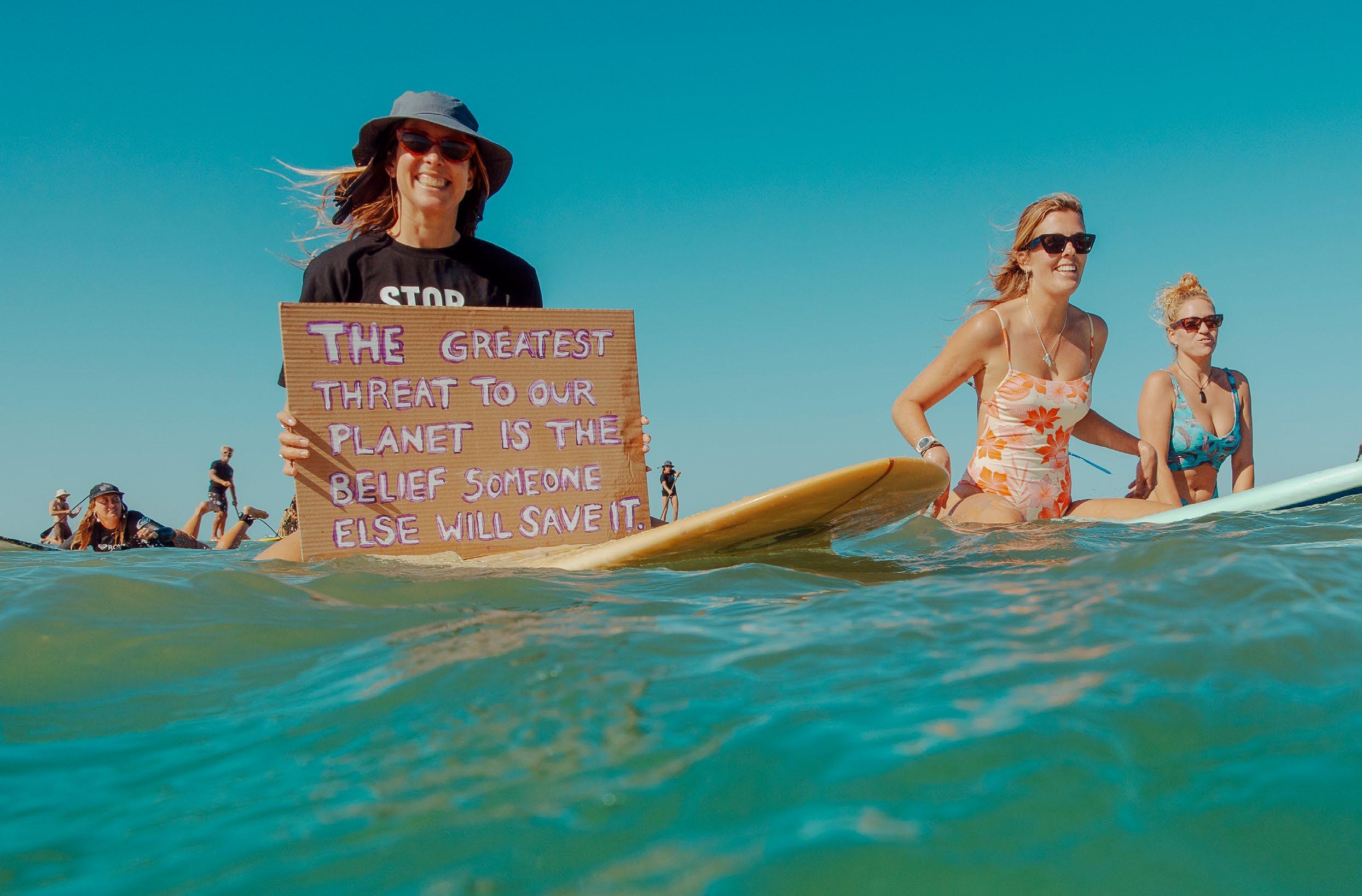
Your support is what gives Greenpeace Australia Pacific the power to drive our vision of an Earth capable of supporting life in all of its magnificent diversity.
That’s why we’re committed to ensuring efficient and transparent stewardship of your generosity. Every day, our campaigners work closely with our operations and finance departments to make sure your donations are strategically allocated towards securing meaningful and lasting impact in the areas that matter the most, whether it be at the local, regional or global level.
Thank you for being part of the Greenpeace family.
Greenpeace Australia Pacific Limited is a public company limited by guarantee, a charity registered with the Australian Charities and Not-For-Profits Commission, and is Deductible Gift Recipient endorsed.
“Stop Woodside’s Drill” Community Flotilla in Exmouth, WA © Greenpeace / Brooke Pyke

We have leveraged strong fundraising and sound financial management to accumulate large reserves in recent years, a portion of which is now being harnessed to supercharge our capacity for impactful campaigning at the speed and scale necessary to meet the climate and biodiversity crisis head on. Even as we undertake to do so, we remain committed to the prudent maintenance of our organisational reserves in the spirit of building sustainability into our strategy, mission, and charitable objectives.
Because we only fundraise on the campaigns we are working on—all of our fundraising communications also contribute to achieving campaign outcomes.
Wamuran, Queensland, Australia © Paul Hilton / Greenpeace
How You Can Get Involved

Collective action powers Greenpeace Australia Pacific’s work securing the system changes that will support a healthier climate and protect nature. There are many ways in which you can join the Greenpeace family and add even more power to our campaigning efforts:
TAKE ACTION
For every new person that speaks up, our campaigns gain even greater influence and power. Follow us on social media and make your voices heard by signing our petitions, sharing our posts online, or joining rallies.
BECOME A DONOR
Help us sustain our experienced crew and impactful campaigns by becoming a regular giver, making a donation to one of our appeals, or becoming a Green Guardian by leaving Greenpeace a gift in your will (p. 64). No matter the size or mode of your generosity, every contribution is critical.
We also warmly welcome conversations with major donors, as well as independent trusts and foundations.
“Never doubt the power of your name. Every single voice makes the chorus for change that much stronger.”
David Ritter CEO Greenpeace Australia Pacific
By committing to making regular gifts on a weekly, monthly or yearly basis, you can drive far more impact.
This is because the predictability of these gifts embeds Greenpeace with the ability to confidently plan ahead and take bold action for the planet.
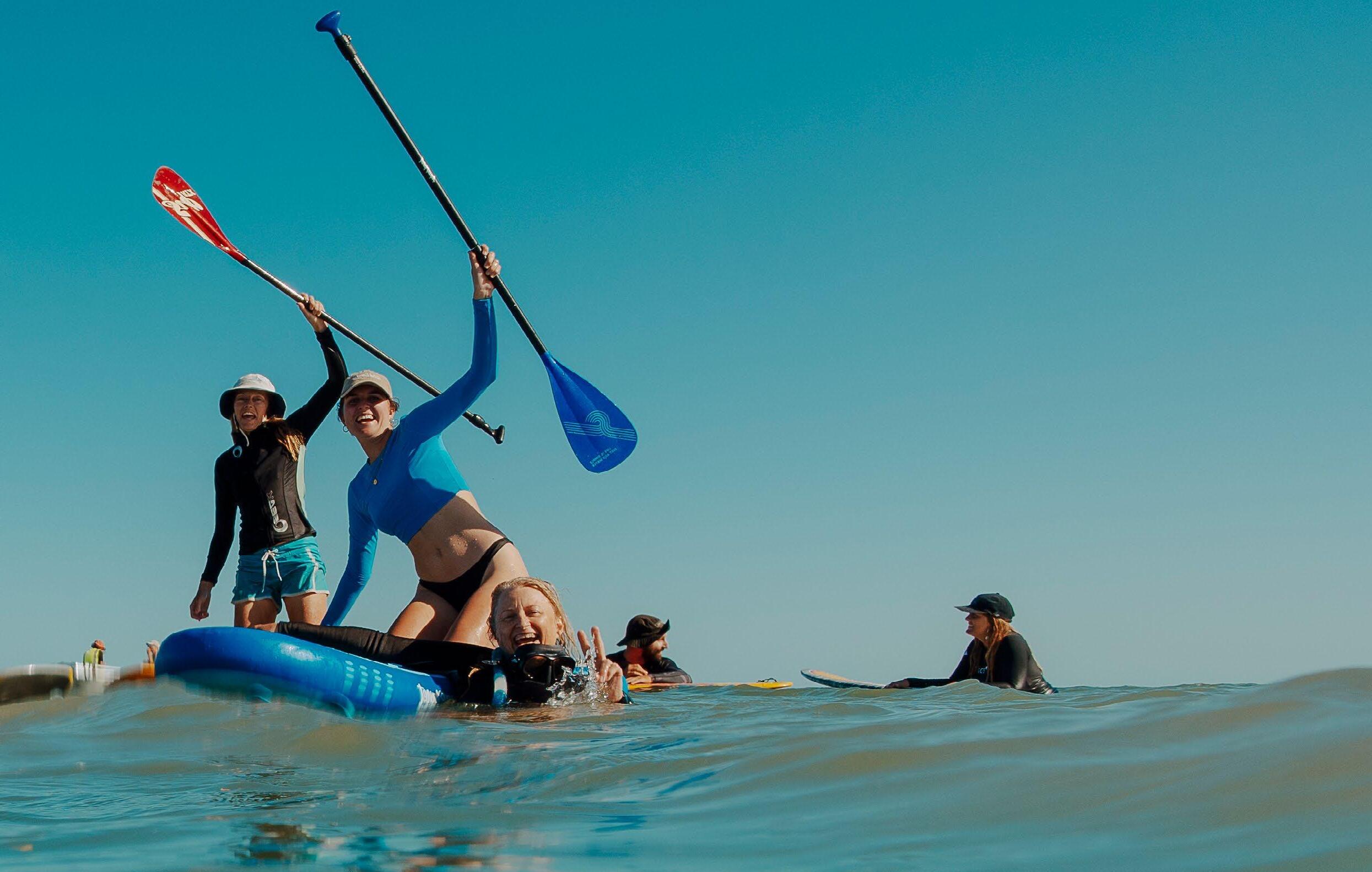
JOIN OUR CREW
Greenpeace Australia Pacific is always on the lookout for talented, environment-focused people with the specialist skills to help us deliver strategic campaigns whilst building the Greenpeace of tomorrow. Keep an eye on our website for upcoming job opportunities.
VOLUNTEER
No matter where you live or your lifestyle, you can become part of our national network of volunteers, where you’ll play a critical role in supporting Greenpeace’s delivery of tactics that will help win our strategic campaigns for a healthier planet.
“I love working at Greenpeace Australia Pacific chiefly due to the moral alignment I feel with the organisation’s ethos and the incredible work culture.”
Stephen Sanders Engagement Administrator
If you’d like to take your passion for the environment to the next level, check out our Basic Action Training weekends where you can learn everything you need to know to launch your journey with us as a volunteer activist.
“Stop Woodside’s Drill” Community Flotilla in Exmouth, WA © Greenpeace / Brooke Pyke
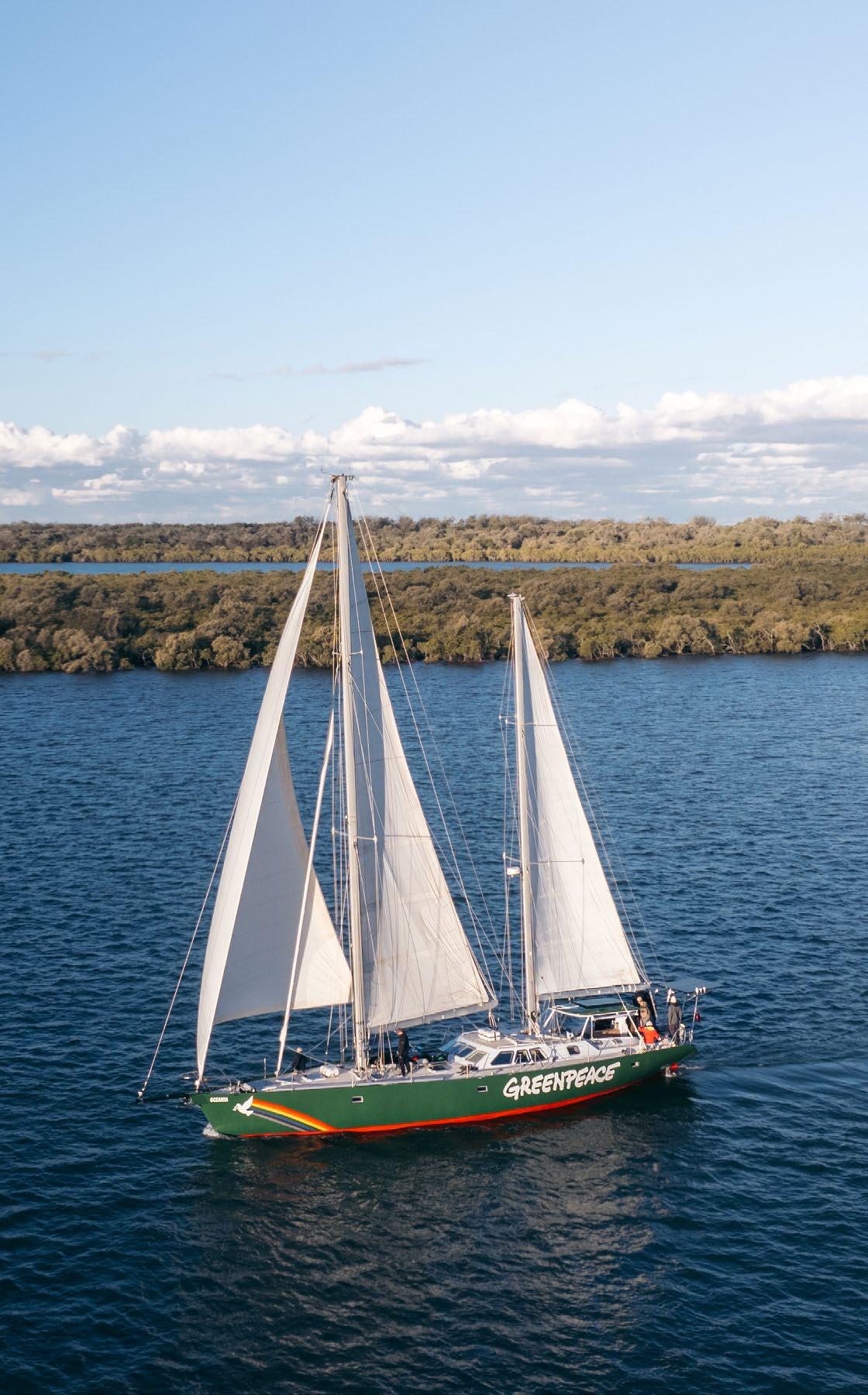

“If you care about health, people experiencing disadvantage, animal welfare, food security, natural disasters... then you care about climate change. And so I feel I must support an organisation that will do the brave and urgent work of challenging those most responsible for our planet’s destruction.”
Fiona Atkinson Green Guardian
Green Guardians
Somewhere out there walking amongst us, are 2,100 Greenpeace supporters who have made a visionary act of generosity by leaving a Gift in their Will to Greenpeace Australia Pacific.
Leaving a Gift in Will is one of the most meaningful and lasting ways in which any individual can help protect the communities, wild places, and wildlife that we all cherish.
For every five dollars donated towards Greenpeace’s mission, a dollar comes from a Green Guardian’s commitment to making sure their passion for their environment will endure.
These Gifts are a legacy left for the future of all life on Earth. As a vital source of long-term support, the legacies of Green Guardians sustain Greenpeace’s ability to remain fiercely independent, to campaign boldly, and to fearlessly advocate for many more decades to come.
No matter the size, every Gift in Will is a testament to the vision of those who leave them, and a living reminder that our love for the planet can continue shaping change for many generations.
SV Oceania’s Sea Trial in Australia © Greenpeace

Introducing Burrapur
Every day, staff and visitors entering the main lower gallery of Greenpeace Australia Pacific’s Rainbow Warrior House in Sydney are greeted by Burrapur (‘tomorrow’ in Dharug), a magnificent sculpture honoring our Green Guardians and their extraordinary legacies.
Crafted from recycled metal and timber, it depicts a mother whale Yanu (‘farewell’ in Dharug) caring for her calf Warami (‘hello’). Encircled by an illuminated spiral with the shimmering names of each Green Guardian, Burrapur beautifully symbolises the intimate role that Green Guardians play in our mission —to secure an earth capable of nurturing life in all of its magnificent diversity.
As each name of a Green Guardian is added to the circle of light around mother Yanu and calf Warami, so grows our sense of purpose; powered by love, hope through action, and everlasting gratitude
“Seeing the names of people I have known memorialised in the bright circles [of Burrapur] for the first time was deeply emotional, bringing to life their faces, voices, and spirits again.”
David Ritter Greenpeace Australia Pacific CEO
You can become a Green Guardian too. Green Guardians come from all walks of life, united by a shared commitment to protecting our planet for future generations. By leaving as little as 1% of your will to Greenpeace, you can help sustain bold environmental action for years to come too.
© Greenpeace / Toby Davidson
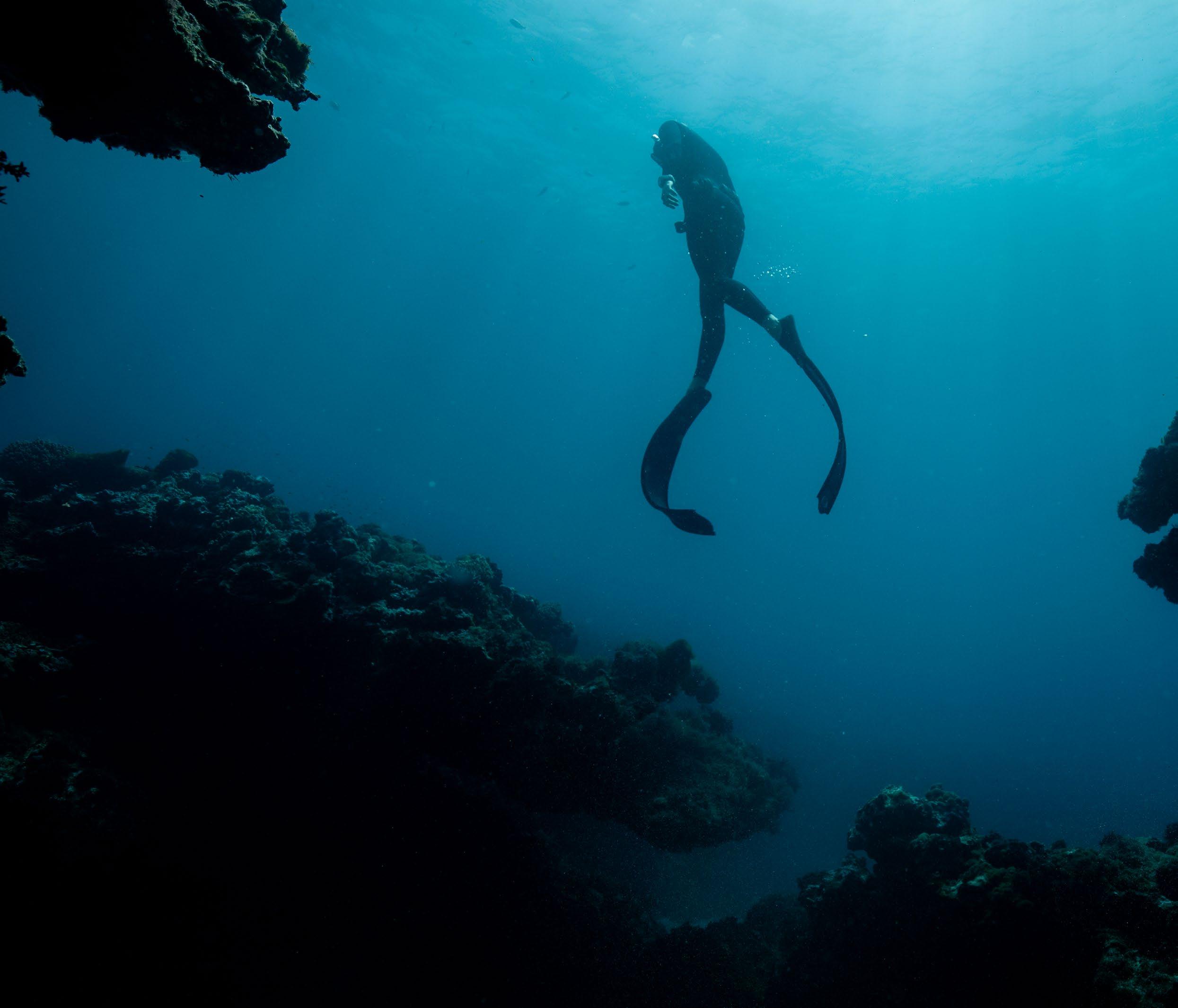
2025 AND BEYOND
As Australia steps into the global spotlight with its bid to co-host COP31 in 2026, Greenpeace Australia Pacific will continue working in deep collaboration to drive bold system changes.
Climate & Energy
Australia’s gas sector’s continued pursuit of new projects despite accelerating climate impacts and the rise of clean energy alternatives underscores the urgency of building momentum for Australia to commit to a fast, fair fossil fuel phase-out by 2026.
PREVENT NEW GAS PROJECTS
We’ll keep up the pressure on the Federal government to deny Woodside Energy’s Burrup Hub project (p. 20), whilst building public opposition to gas in Australia more broadly.
EXPOSE THE TRUTH ABOUT GAS
We’ll also challenge the gas industry’s social license and political power head on, making it difficult for corporations and politicians to continue justifying new gas projects in Australia.
ACCELERATE CLEAN TRANSITIONS
Meanwhile we’ll continue setting the stage for Australia’s transition to clean energy (p. 24) by establishing the case and political and public support, with a focus on Western Australia.
Olivia Rose freediving at Malabar Cliff dive site, Lord Howe Island © Greenpeace / Bridget Ferguson
Nature
Corporations continue to prioritise profit over Australia’s unique flora and fauna. Key decisions by governments across the world throughout 2025 will also shape the future of our oceans and their rich biodiversity.
END DEFORESTATION
We’ll hold Australia’s biggest beef buyers accountable on their implementation of deforestation-free commitments (p. 30), whilst maintaining political pressure for strong nature law reforms.
Pacific Climate Justice
PROTECT THE OCEANS
We’ll keep pushing for Australia to ratify the Global Oceans Treaty and establish marine sanctuaries (p. 35), whilst amplifying the case for a strong Global Plastics Treaty to end ocean pollution.
SAVE THE SCOTT REEF
We'll continue investigating and publicly exposing the environmental threats posed by Woodside’s Burrup Hub to the heritage-listed Scott Reef, (p. 20).
The Pacific, home to rich biodiversity, unique ecosystems, and vibrant cultures, is the world’s most climate vulnerable region. This has embedded its communities with a unique moral authority to speak out on the global stage on climate change and human rights, in pursuit of climate justice.
COP30
We’ll centre Pasifika voices in the lead up to and during COP30, calling for Australia to step up on fossil fuel phase out and making polluters pay, while we work with our Pasifika networks to set the stage for an Australia-Pacific hosted COP31 in 2026.
DEEP SEA MINING
We’ll support and amplify Pasifika advocacy efforts pushing Pacific governments to set a moratorium on Deep Sea Mining that protects Pasifika culture, lives, and livelihoods from extractive industries.
HUMAN RIGHTS
Meanwhile, we’ll keep a close watch on The Hague, where the world’s highest court is preparing a ruling on the duties owed by countries to protect human rights from climate change (p. 44).
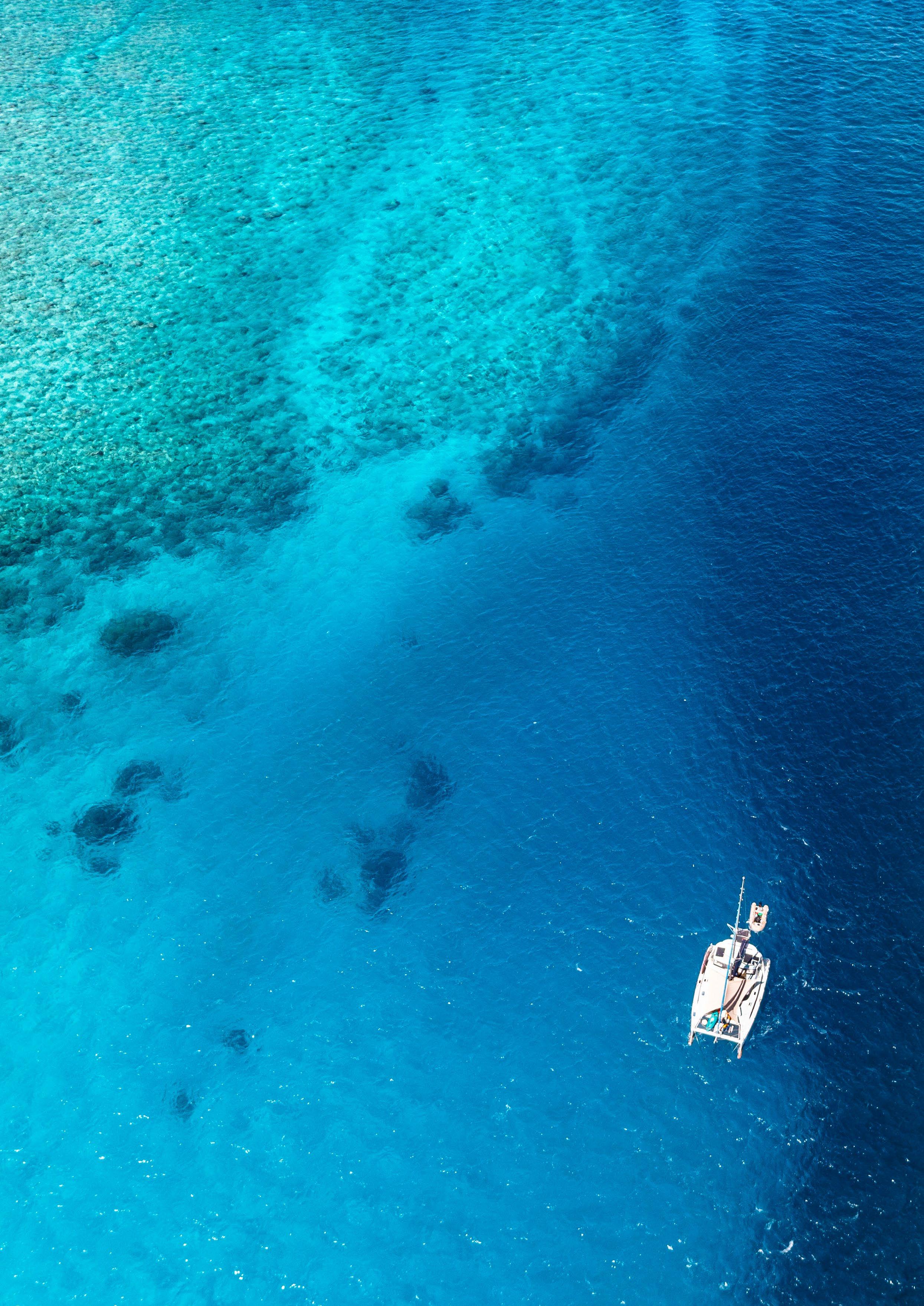
THANK YOU
Together, we are a powerful force of over a million determined and passionate individuals, speaking out together for a greener and more peaceful world.
Together, we are unstoppable.
Aerial View of Scott Reef in Australia © Alex Westover / Greenpeace
